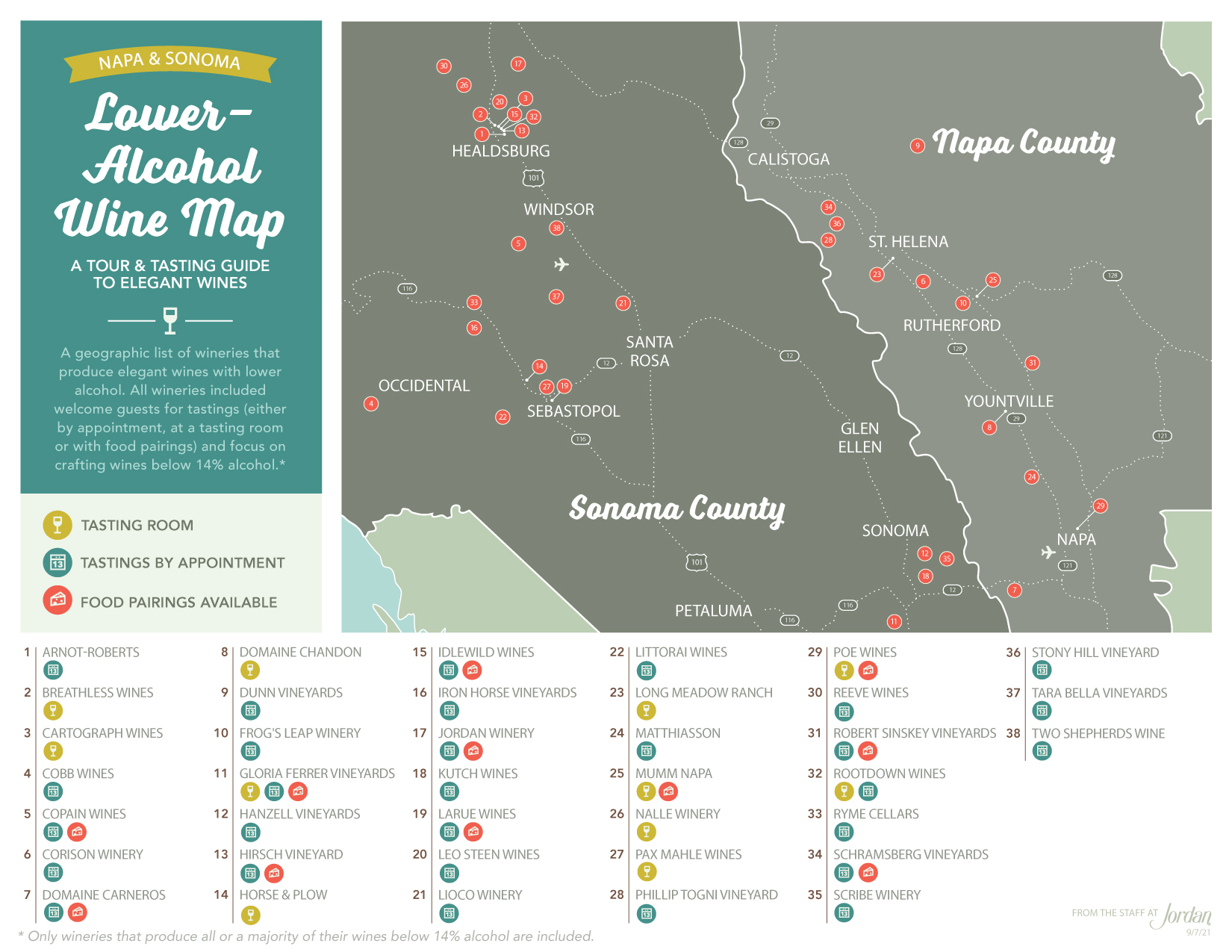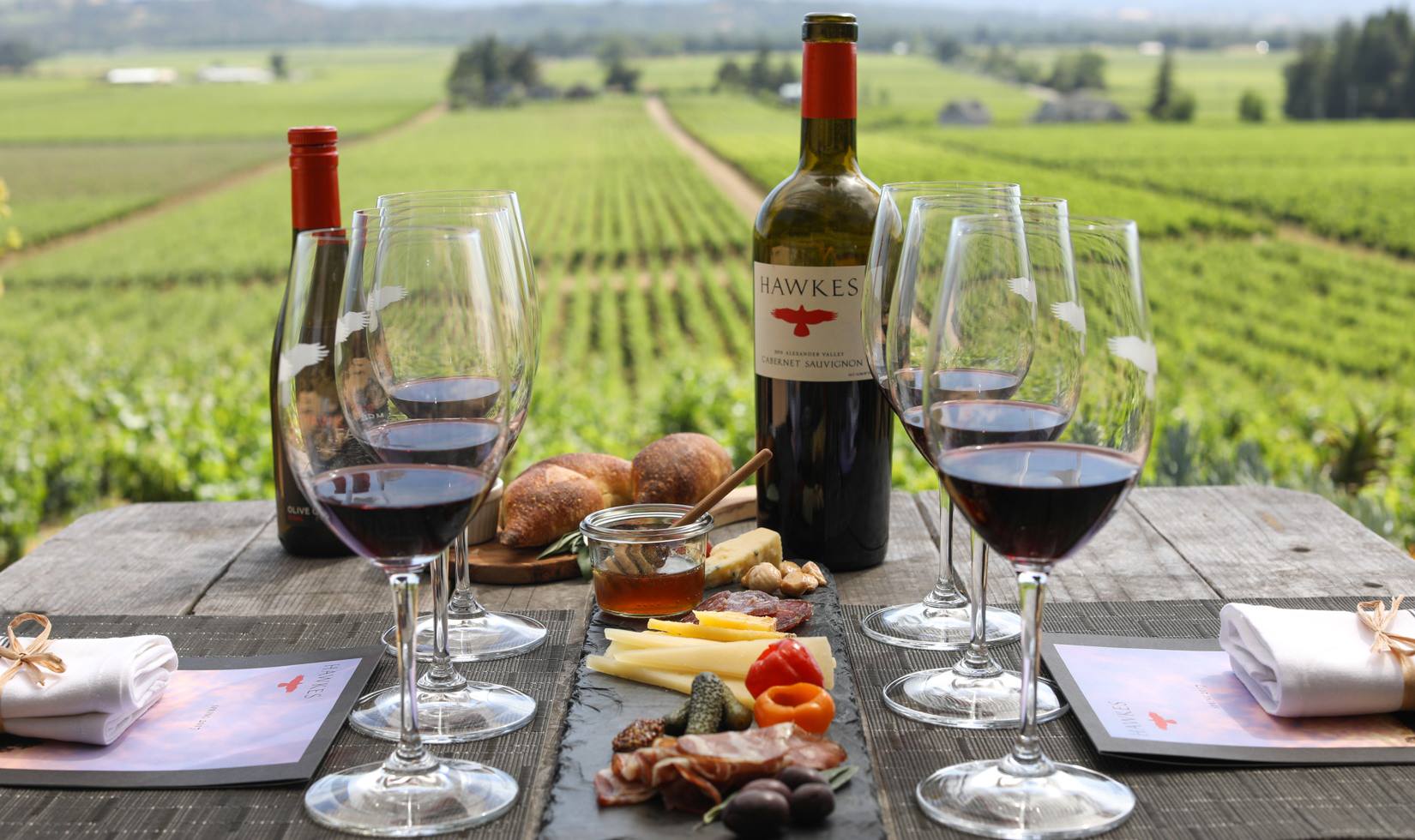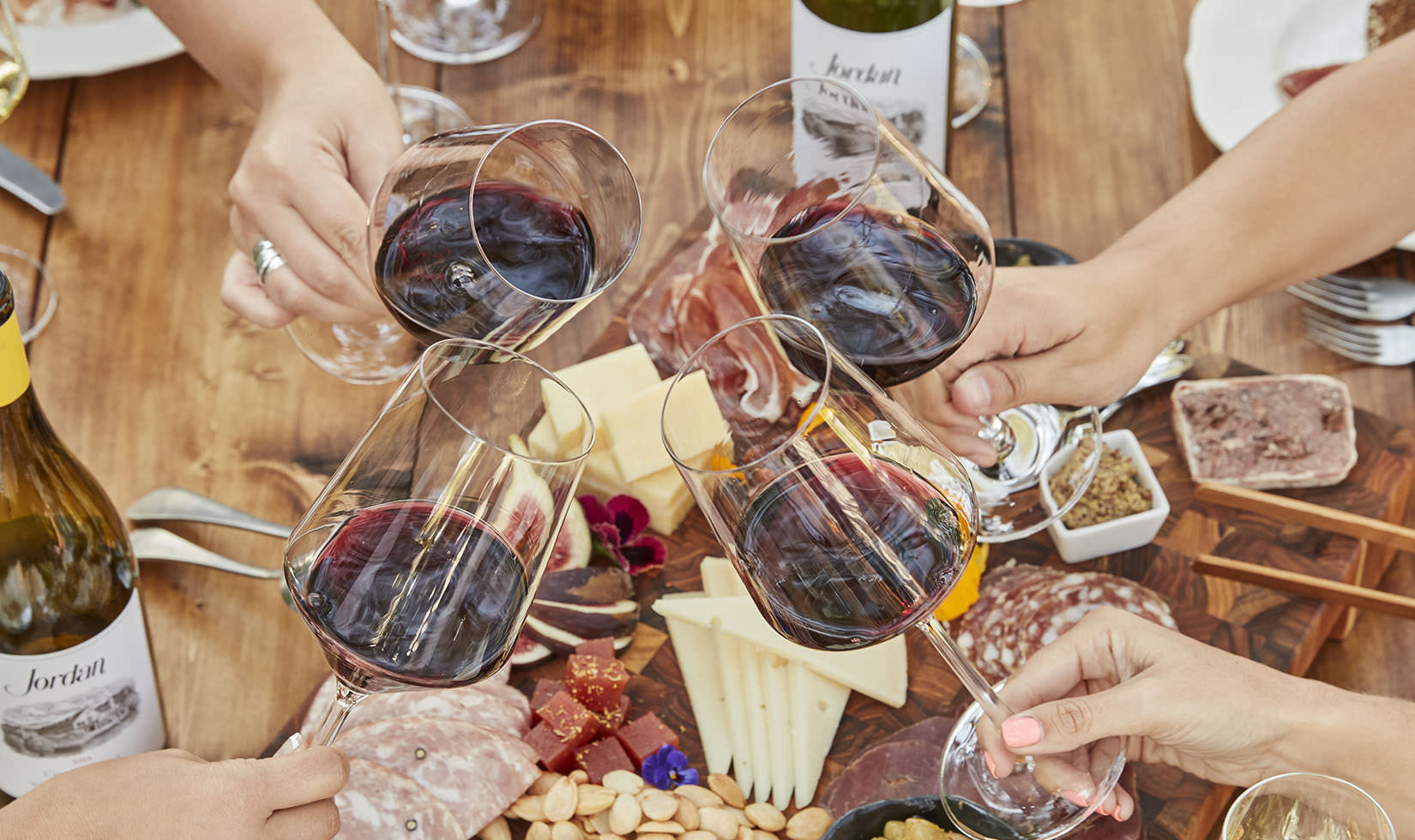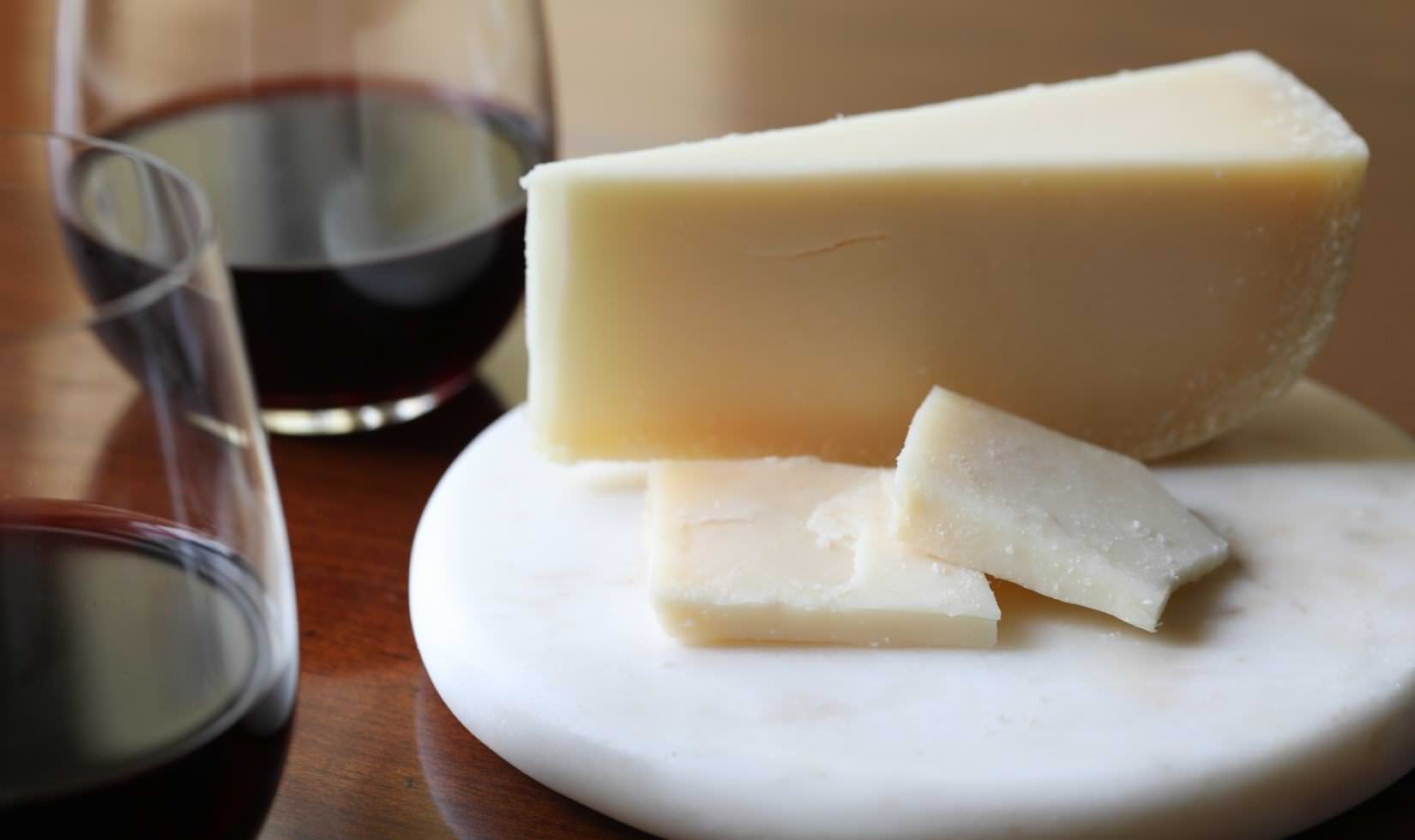California wine country has its share of Sonoma and Napa winery maps. Each is organized by geographic region, offering tourists a convenient, vinous travel guide to Napa and Sonoma wineries. Some include details on amenities, such as food pairings, picnic grounds and wifi, but very little information about the wines produced. Enter the first official Napa and Sonoma Wines with Low Alcohol Tasting Map, now in its third edition in 2021. Because Jordan has been making balanced wines for 40 years, we’ve watched many wineries come and go—and the trend of high-alcohol wines rise—so we’ve put together a map showcasing the best wineries to visit in Napa and Sonoma if you’re seeking elegant wines with low alcohol. Why take on such a project? We’ve never seen a California wine country map for visitors based on wine style, and interest in lighter wines is becoming more prevalent in wine country, as savvy visitors grow to appreciate the food-friendly charms of elegant wines that emphasize fruit and acidity over tannin and alcohol.
The traditional wine country tasting-route map format has been retooled to pinpoint wineries in Napa and Sonoma counties that produce wines with moderate alcohol levels (14% and under), keen balance, elegance and host guests to tastings, typically by appointment. In Europe where wine regions are mostly in cooler climates, lower alcohol is considered 13% or below, but in Northern California’s sun-drenched inland appellations, making red wines with those alcohol levels has become less common in the last three decades (though there are newcomer low-alcohol advocates), so we set the cut-off at under 14 alcohol-by-volume. Of the 38 wineries included, 76% are located in Sonoma and 24% in Napa–the latter of which includes four sparkling wine producers. The results are not surprising, considering the ocean influences of cooler-climate Sonoma, where myriad grape varieties thrive, and Napa’s warmer inland locale, where powerhouse cabernets remain the focus.
In some cases, we’ve included wineries that produce primarily low-alcohol wines but also make one or two bottlings at or just above 14%—those that make wines from notoriously ripe grapes, such as zinfandel, barbera, sangiovese or petite sirah, for example. You’ll also find some vintners known for balance excluded, such as Benziger (several single-vineyard wines above 14%), Inman Family and Ridge (eight zinfandels and three whites above the cut-off). Sparkling wine producers whose bubblies are well below 14% alcohol also made the list, but some of their still wines are slightly above the 14 mark.
Those with tasting rooms that are open to the public without an appointment may only accept guests on specific days of the week; wineries with food pairings almost exclusively require appointments for those experiences, so please make reservations far in advance. (Food pairings included range from a cheese plate to hors d’oeuvres.) Alcohol percentages shown on labels and winery websites were used to compile this listing.
If we’ve missed any of your favorites Napa and Sonoma wineries, let us know in the comments. The map will be updated each summer; any additions are noted by date in the list below; publish date of the latest version is noted in the lower-right-hand corner of the map.
2021 Wines with Low Alcohol Guide to Napa and Sonoma Wineries
SONOMA COUNTY
Arnot-Roberts
Founded by childhood friends Duncan Arnot Meyers and Nathan Lee Roberts, this boutique producer focuses on small-lot, single-vineyard pinot noir, syrah, zinfandel and sauvignon blanc, as well as uncommon varieties like gamay and trousseau. Wines are sold through a mailing list, and tasting appointments are reserved for list members. (Updated 9/7/21)
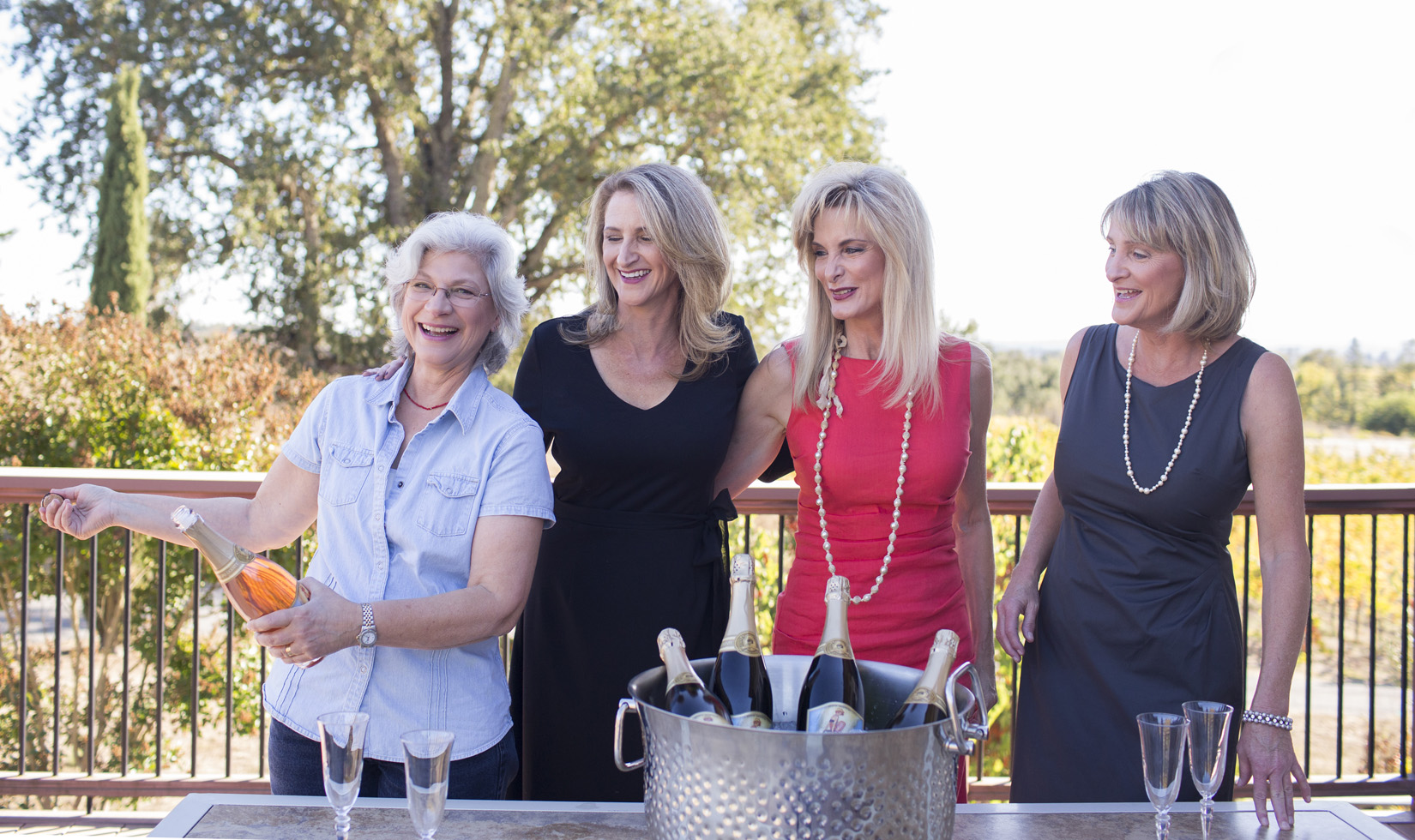
Breathless Wines
Three Faust sisters—Sharon, Rebecca and Cynthia—joined winemaker Penny Gadd-Coster in this bubbly brand. Their wines are produced with classic Champagne methods, with secondary fermentation in the bottle. 12.5% alcohol is the norm for all their sparklers. (Added 6/21/17)
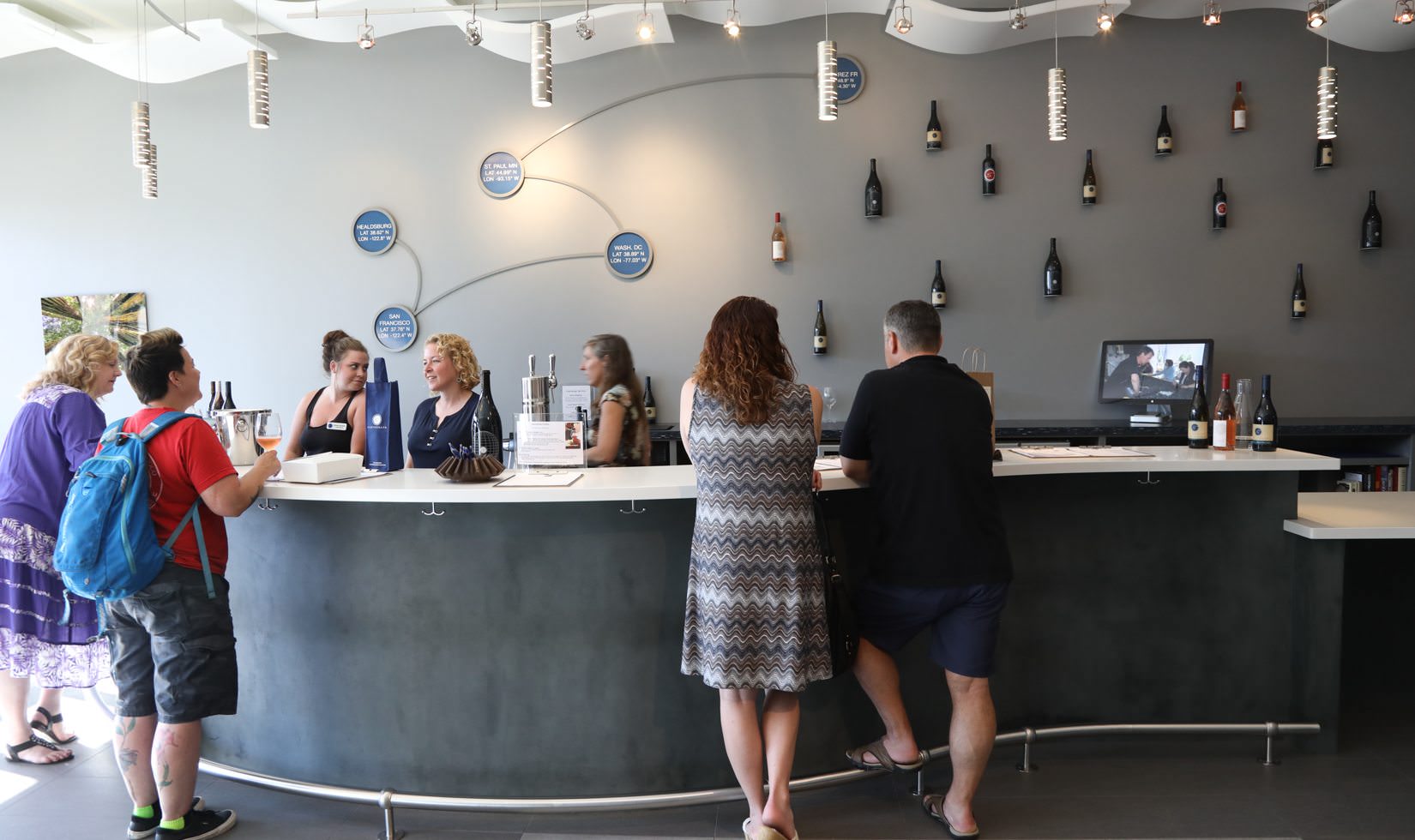
Cartograph Wines
Proprietors Alan Baker and Serena Lourie hit the 13.5% alcohol target on a regular basis with their restrained yet fruit-driven rieslings, gewurztraminers, pinot noirs and sangioveses, sourced from Sonoma, Oregon and Mendocino vineyards. (Updated 9/7/21)
Cobb Wines
Ross Cobb and his family committed to cold-climate viticulture by planting the Coastlands Vineyard near Occidental, a stone’s throw from the chilling Pacific Ocean. The pinot noirs are bracing, nuanced and average 13.5% abv. The stunner, though difficult to acquire: Coastlands Vineyard Diane’s Block. Tastings available by appointment. (Updated 9/7/21)
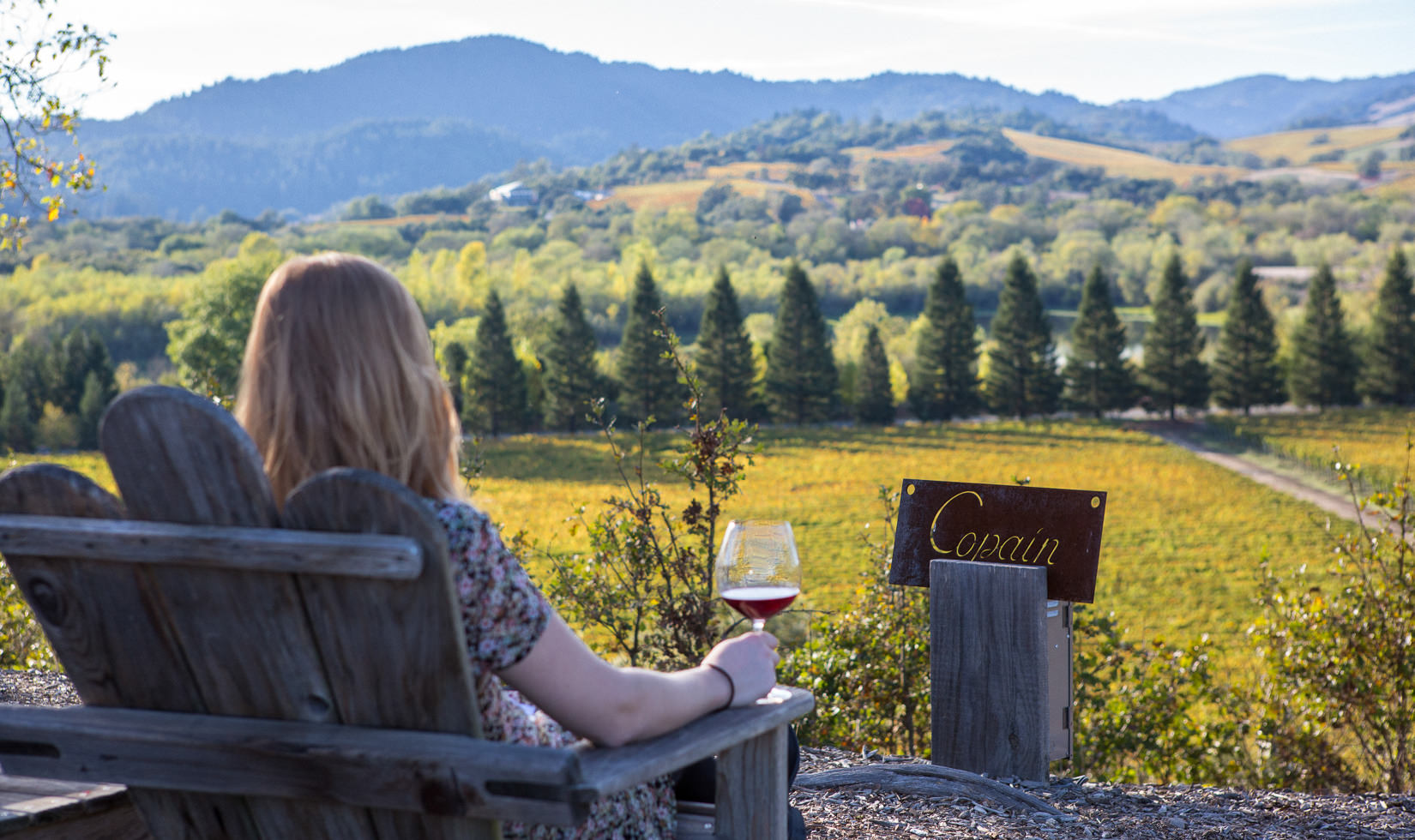
Copain Wines
Offering chardonnay, pinot noir, syrah and trousseau, Copain eschews fat, alcoholic wines for those with precision and elegance. Founder and winemaker Wells Guthrie sold Copain to Jackson Family Wines in 2016, and the wines are now in the capable hands of winemaker Ryan Zepalta—formerly of Siduri— who championed a style similar to Copain’s under his own acclaimed Zepantas Wines label. (Updated 9/7/21)
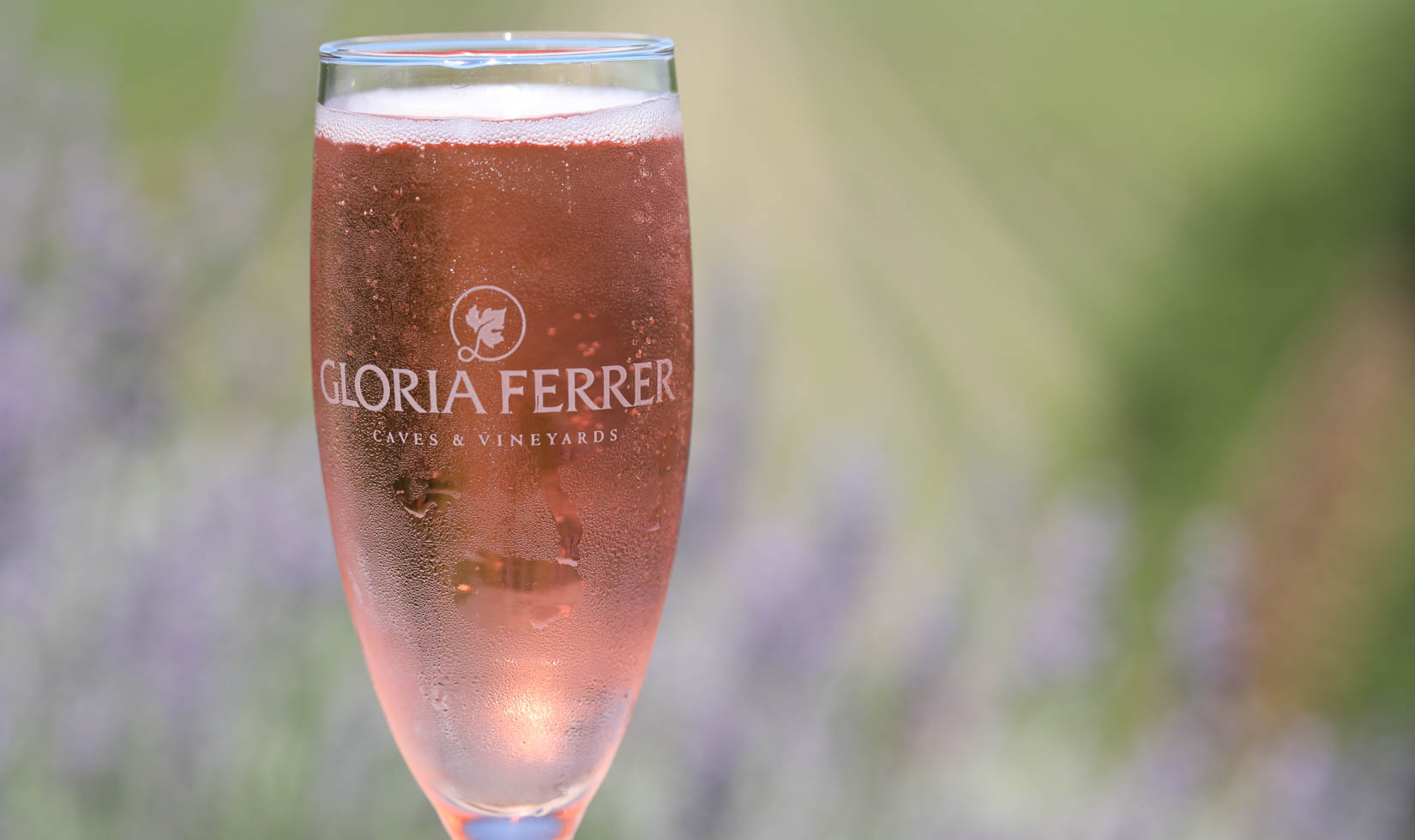
Gloria Ferrer Caves & Vineyards
Low-alcohol levels run throughout the sparkling wine lineup of this Spanish-owned winery in Carneros. The still chardonnays and pinot noirs tend to be over 14%, but the finest bottlings are the bubblies, sold at very fair prices for the quality level. (Added 6/21/17)
Hanzell Vineyards
Founded by Ambassador James D. Zellerbach on a steep hillside in the Moon Mountain AVA, Hanzell has been growing chardonnay and pinot noir grapes on this historic site since 1953. Known for its finely balanced wines, Hanzell produces beautiful, subtly-oaked estate chardonnay and pinot noir, plus a cabernet sauvignon—all well within the 13% realm. Tasting visits are available by appointment. (Added 9/7/21)
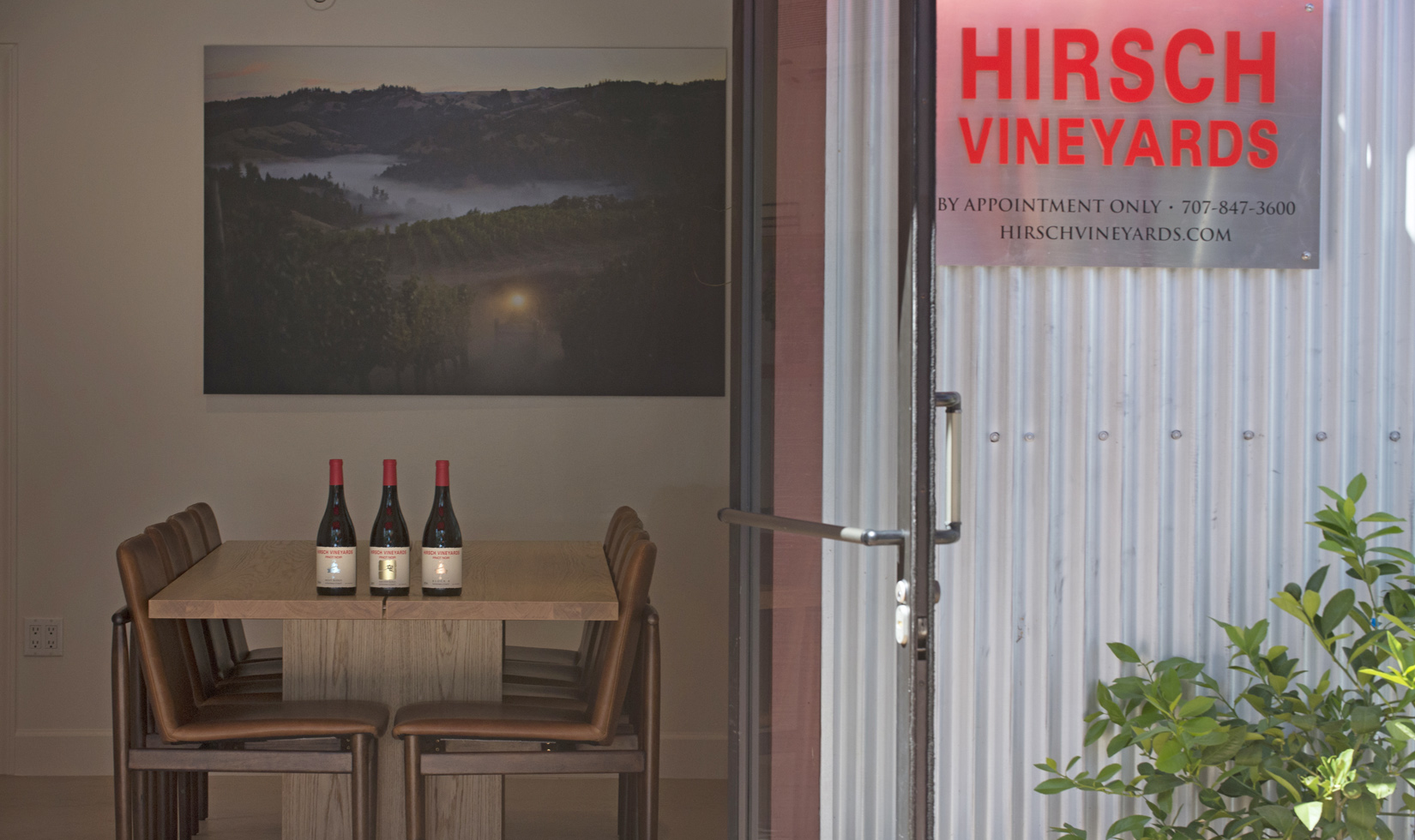
Hirsch Vineyard
David Hirsch’s mountaintop vineyard on the far-western Sonoma Coast is chilly, wind-swept and just barely suitable for growing wine grapes. From there, he and winemaker Jasmine Hirsch coax small yields of fruit that becomes delicate, precise pinot noirs and chardonnays with verve and most under 13% abv. (Updated 9/7/21)
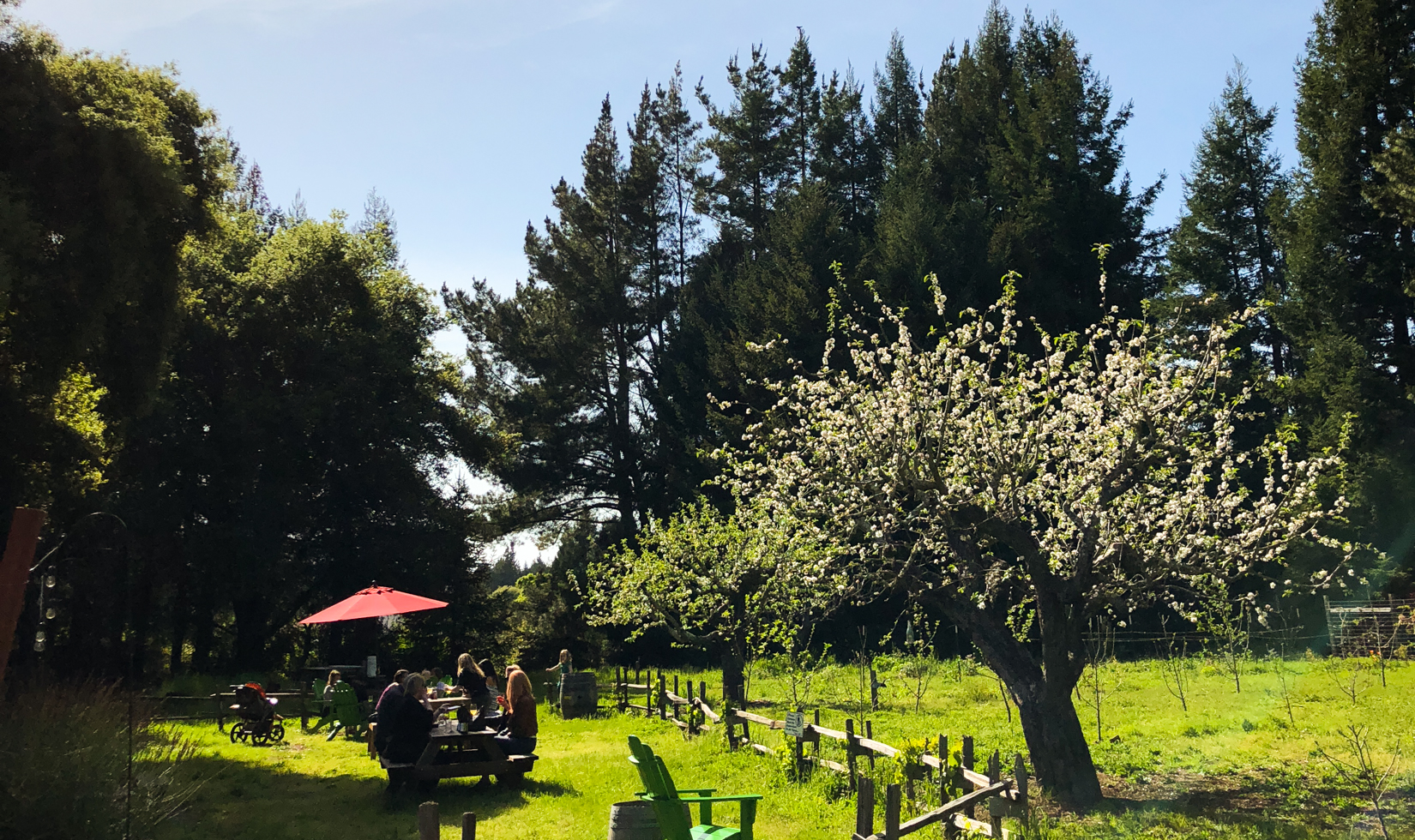
Horse & Plow
Suzanne Hagins and Chris Condos produce low-alcohol wines in Sonoma County, under their Horse & Plow label and with a commitment to purchasing organically and biodynamically grown grapes. Occasionally a grenache tips past 14%, but their whites and pinot noirs weigh in at 13% or so. The current release 2017 cabernet franc weighs in at 13.9%. (Updated 9/7/21)
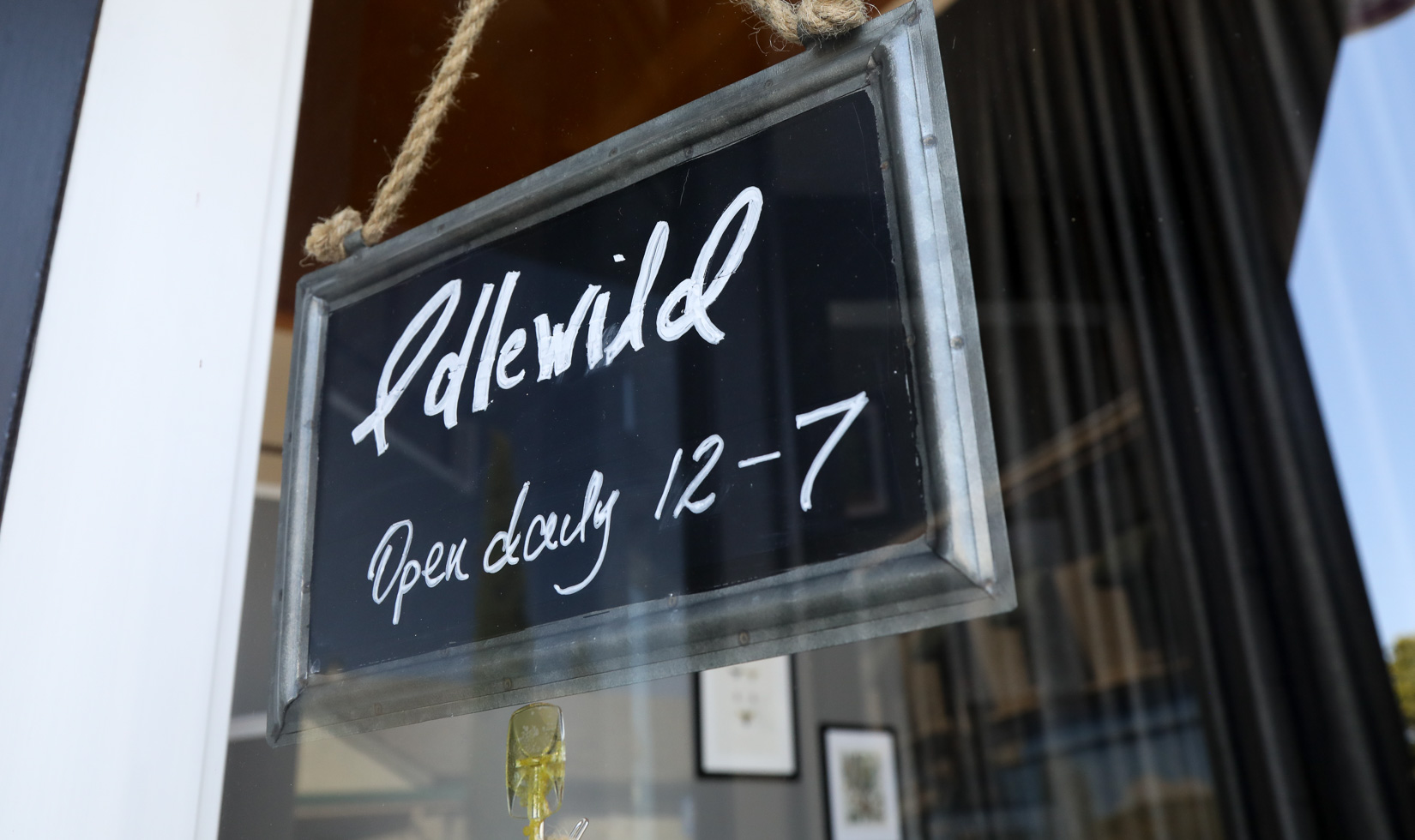
Idlewild Wines
Owner Sam Bilbro grew up at his family’s Marietta Cellars, but struck out on his own with this small label that produces Piedmontese varietals grown in the elevated hills of Mendocino County. Most of the reds, with the exception of the Fox Hill Barbera at 14.4%, are around 13% and many of the whites clock in at less than 13%. Drop into Sam’s salumi and wine bar in Healdsburg for a glass of wine with meats and cheeses to match; tastings are by appointment. (Updated 9/7/21)
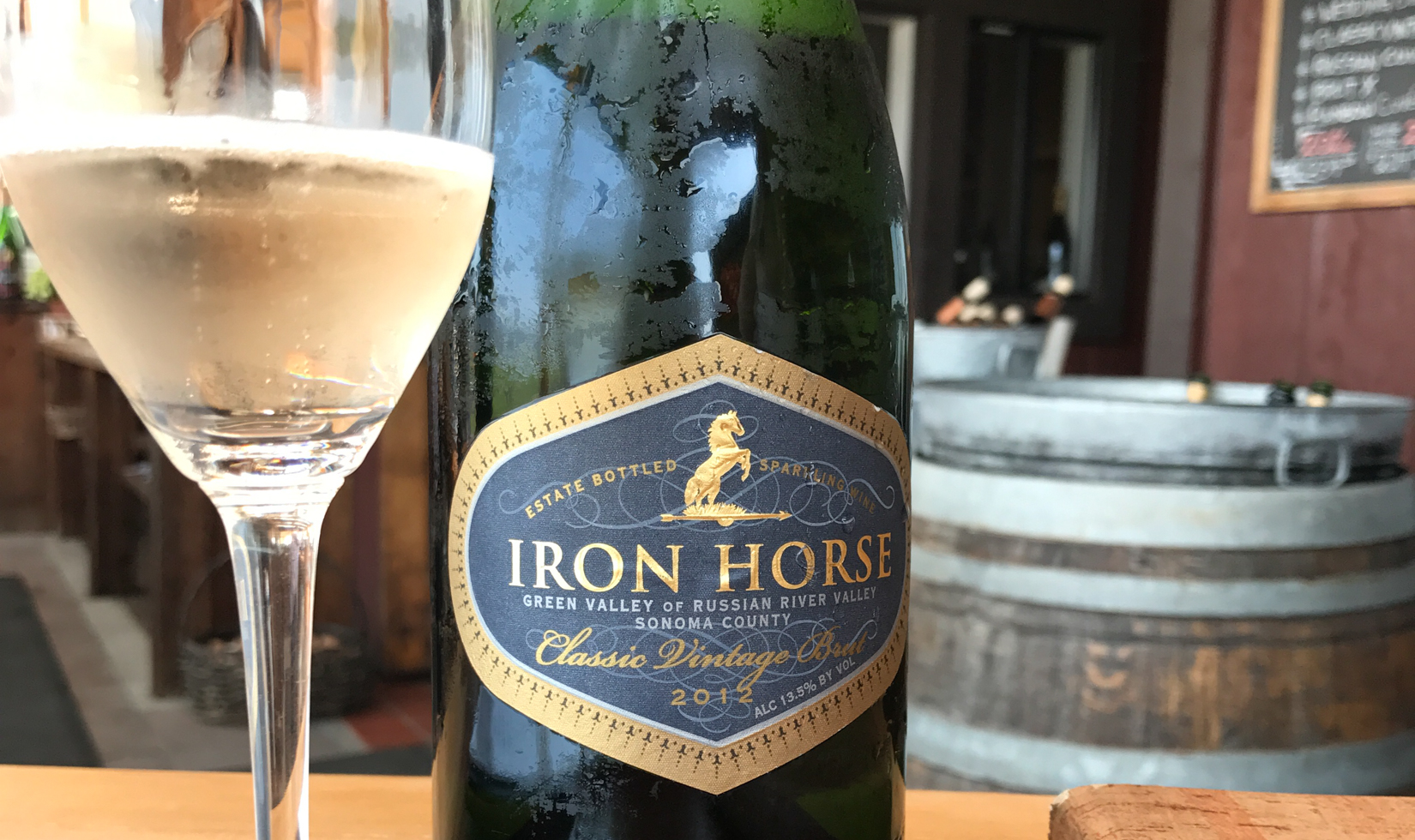
Iron Horse Vineyards
The Sterling family founded Iron Horse in the 1970s, in the cool, foggy Green Valley subset of the Russian River Valley. Their sparkling wines, crafted by Sofian Himeur and David Munksgard, are sublime, made with Champagne methods. Still chardonnays and pinot noirs are also produced, almost all at 13.5% abv. Tastings are by appointment. (Updated 9/7/21)
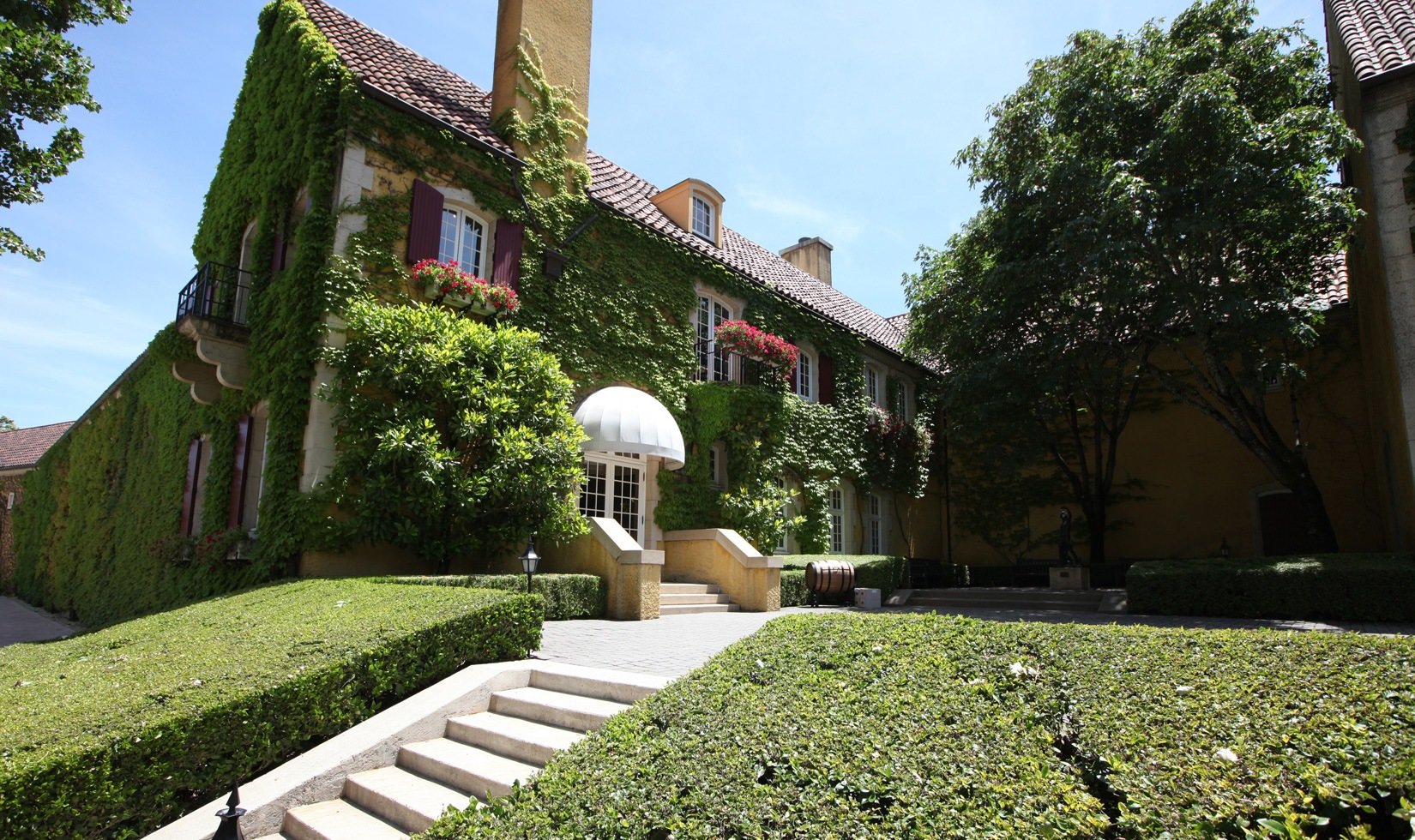
Jordan Vineyard & Winery
From 1976 until 2019, Rob Davis made every bottle of Jordan wine, staying the course in composing elegant, age-worthy wines that never shout yet talk above a whisper. Now, Maggie Kruse carries on Davis’ legacy as Jordan’s head winemaker. One of the few to focus on just two wines, Kruse makes a silky cabernet and crisp chardonnay each vintage, the wines considered more French in style than Californian, with intense fruit and an acid structure that makes both wines popular on restaurant wine lists. (Updated 9/7/21)
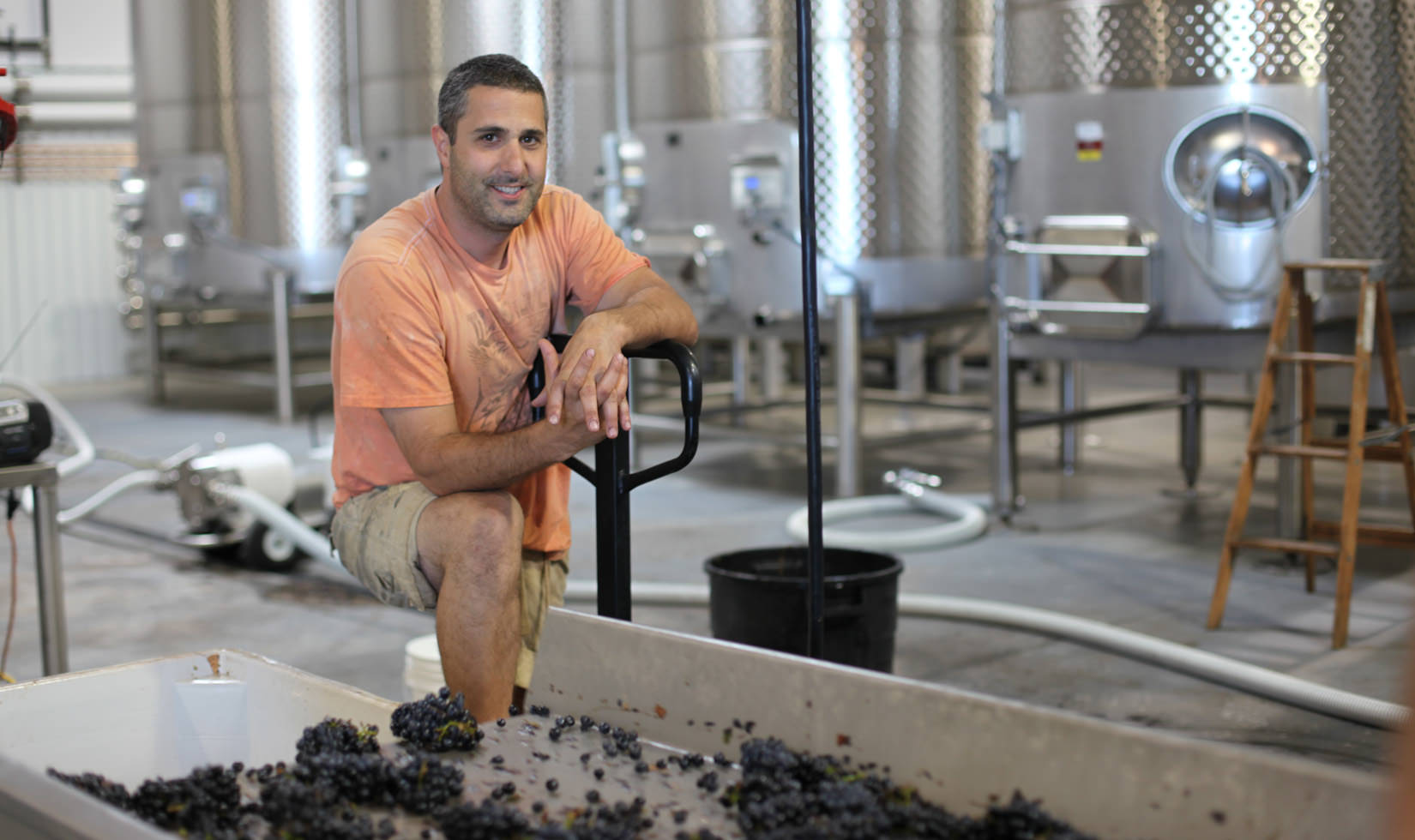
Kutch Wines
In the early 2000s, stock trader Jamie Kutch left Wall Street for the Sonoma Coast, to produce pinot noirs that are remarkably well-stuffed and intense for their 13% average alcohol levels. Top vineyard designates include Bohan, MacDougall and Falstaff. Tastings by appointment. (Updated 9/7/21)
LaRue Wines
Katy Wilson works with Ross Cobb as a consultant to several Sonoma wineries. LaRue is her personal brand, named for her great grandmother, Veona LaRue Newell. Wilson’s Sonoma Coast chardonnays and pinot noirs, from such vineyards as Rice-Spivak and Thorn Ridge, are elegant and energetic. All bottlings are well below 14%. Tastings by appointment only, at Emmaline Ann Vineyards, west of Sebastopol. Directions given at time of booking. (Updated 9/7/21)
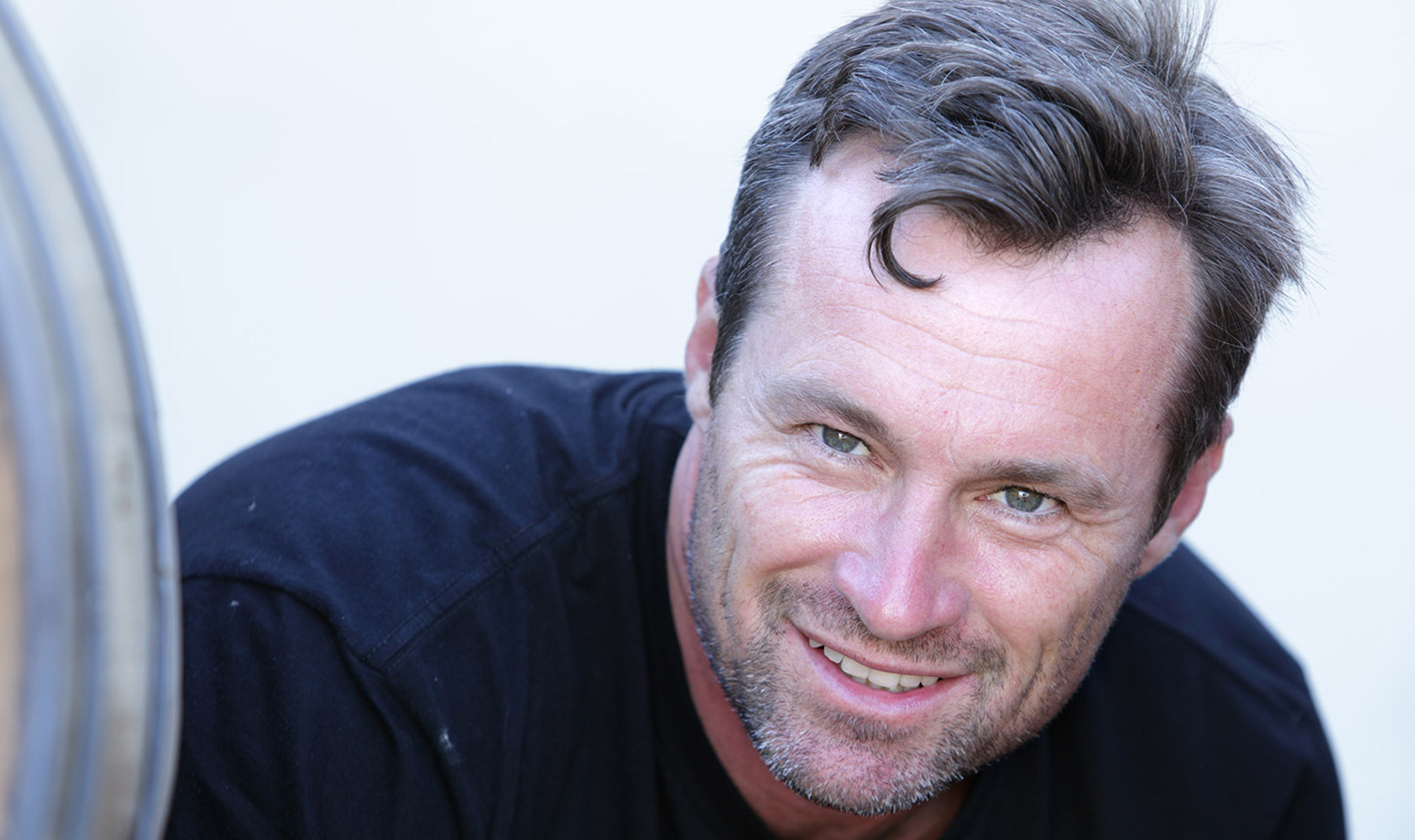
Leo Steen Wines
Leo Steen Hansen left his sommelier job in Denmark to make wine in many regions, eventually settling in Healdsburg, where he is the winemaker for Stuhlmuller Vineyards. Under his own label, he makes chenin blancs, chardonnays, grenaches and cabernet francs that are under 13.8% alcohol, yet burst with fresh fruitiness and vitality. The flagship Dry Creek Valley old-vine chenin blanc is 13 %, the flavorful DCV grenache 13.5%. Hansen has a tasting room in Healdsburg. (Updated 9/7/21)
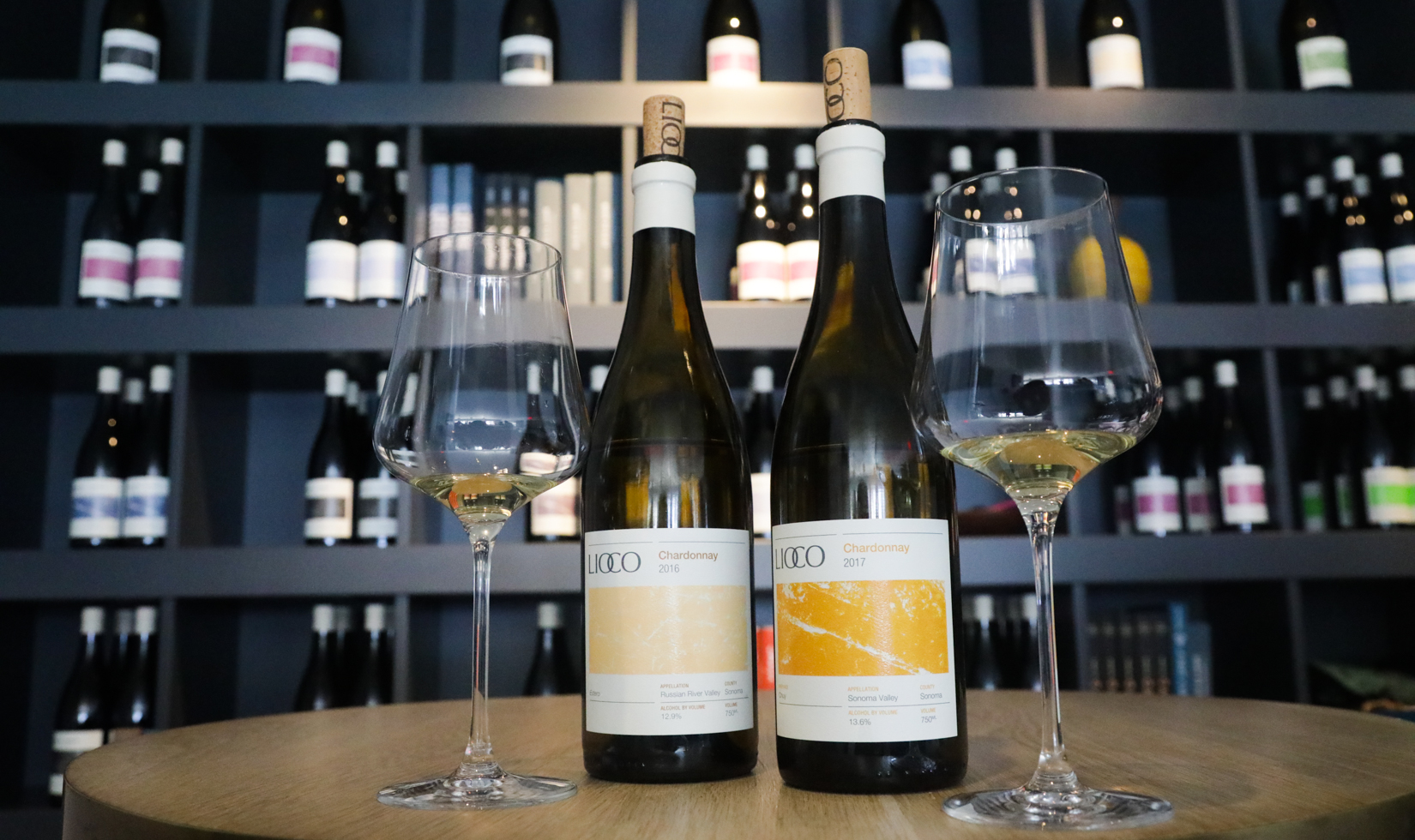
LIOCO Wine Co.
Former wine importer Matt Licklider and ex-sommelier Kevin O’Conner are LIOCO, which is now operated by Licklider and his wife, Sara. Their chardonnays, pinot noirs and carignans come from chilly climates and are naturally low in alcohol, in the 12-13.7% range. Naturally fermented, too. Vineyards in Sonoma, Mendocino and the Santa Cruz Mountains are their grape sources. They offer a range of tasting opportunities; check their website. (Updated 9/7/21)
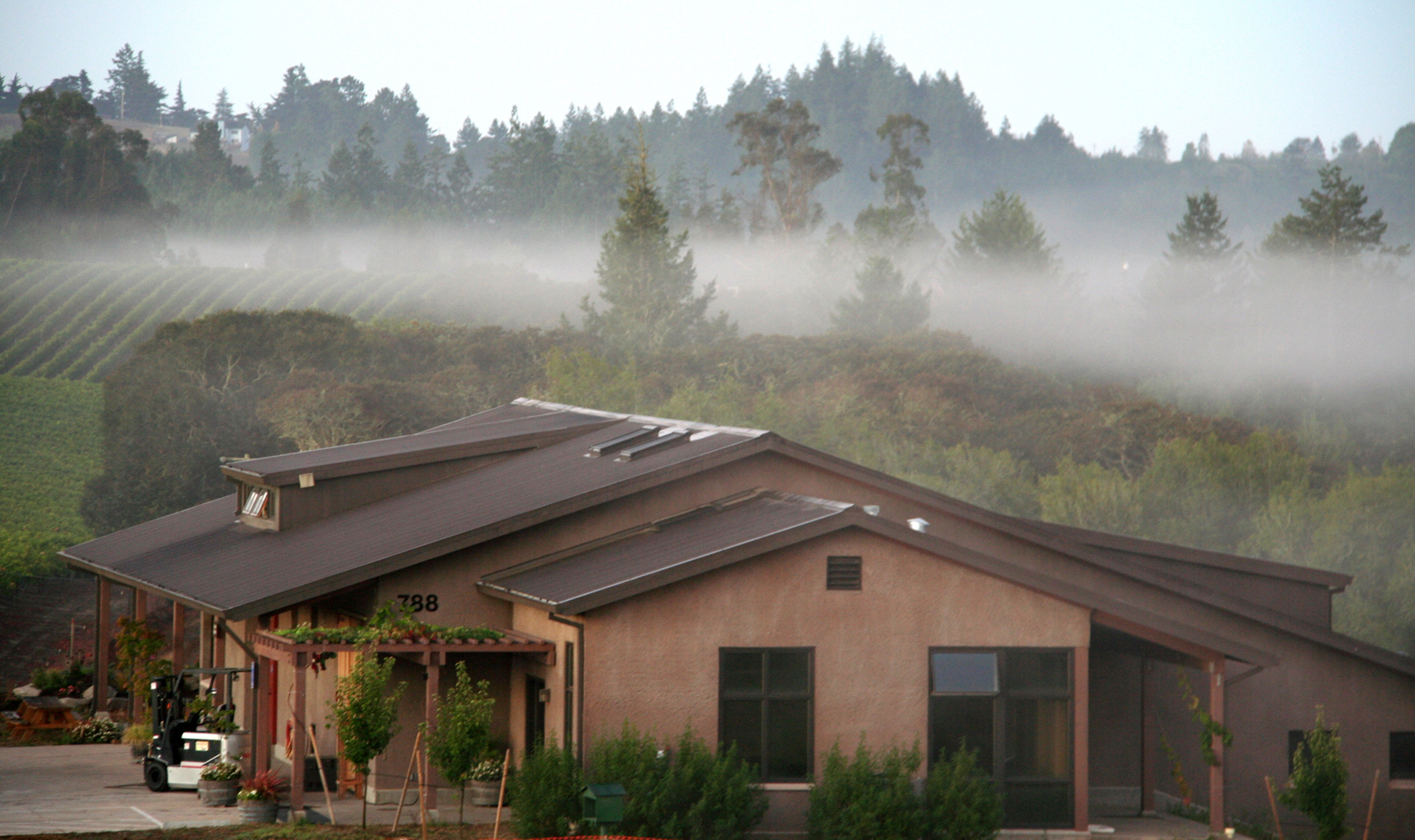
Littorai Wines
Owner/winemaker Ted Lemon is renowned for his measured, meticulous, bracing chardonnays and pinot noirs from the Sonoma Coast and Mendocino’s Anderson Valley. His world-class wines are difficult to acquire, yet worth the search. It’s remarkable how much flavor can come from 13.5% alcohol wines. Tastings by appointment. (Added 6/21/17)
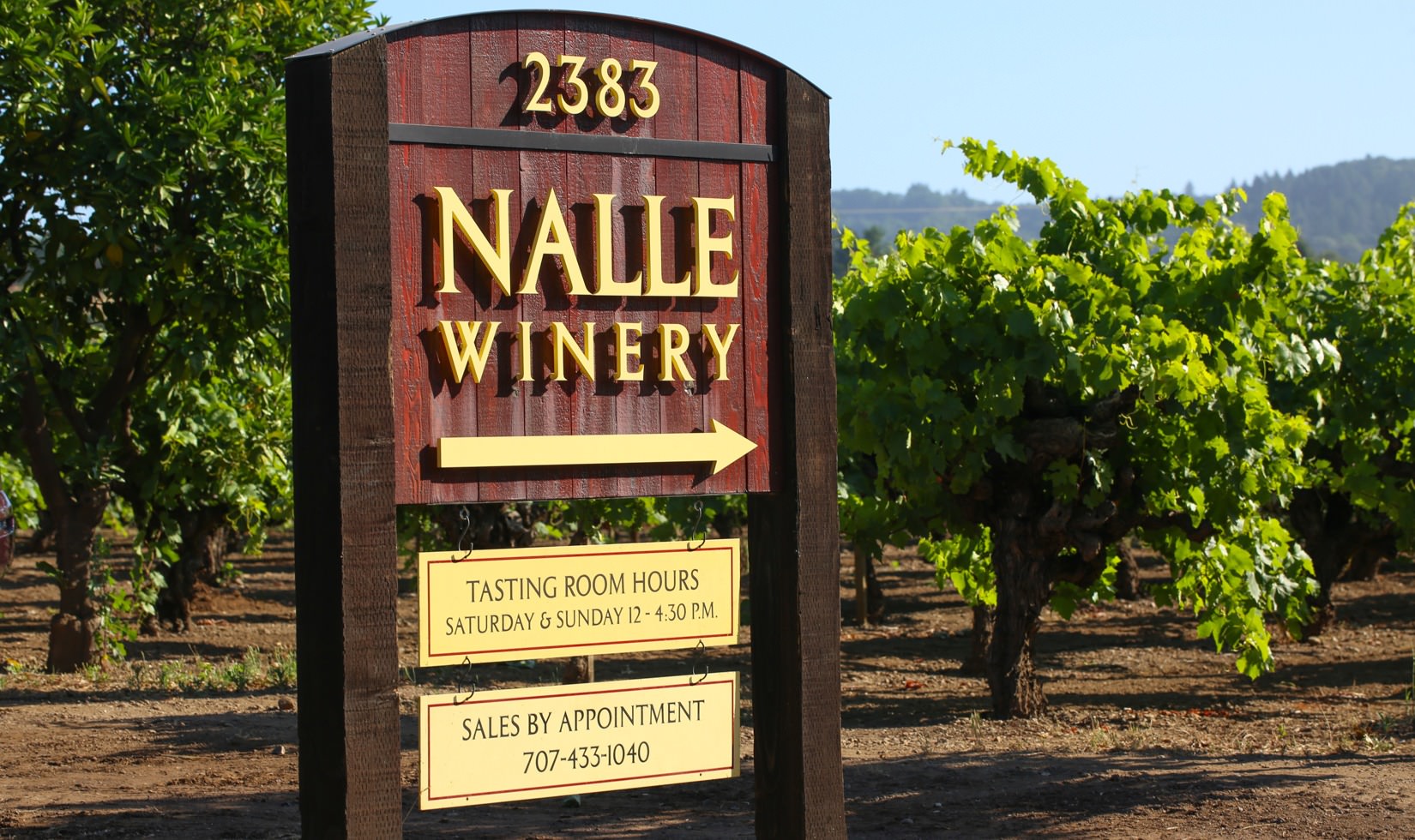
Nalle Winery
Founders Doug and Lee Nalle, and now their son, Andrew, refuse to follow stylistic trends in zinfandel. No matter the fashion of the moment, they have eschewed jammy, potent zinfandels for those with poise, grace, and under 14% alcohols. Pinot noir and cabernet sauvignon also weigh in under 14%. (Updated 9/7/21)
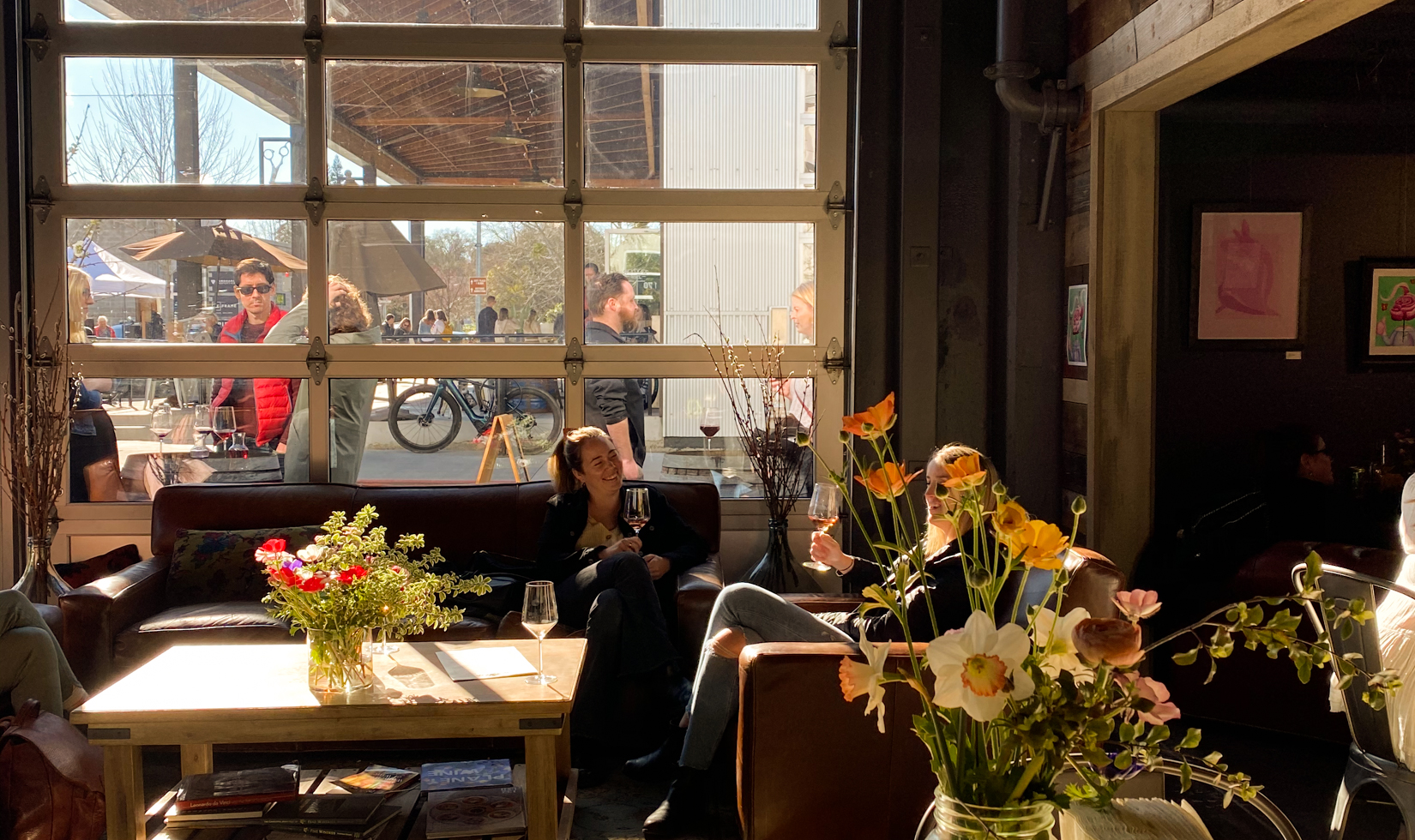
Pax Mahle Wines
Pax Mahle gained winemaking fame in the early 2000s, making big, bold syrahs under the Pax label—high-alcohol wines that Robert Parker adored. But after a fall-out with his majority investor, Joe Donelan, Mahle pressed pause on his eponymous brand to focus on Wind Gap Wines, a label committed entirely on elegant, acid-driven wines from the cold Sonoma Coast, which Mahle had founded with his wife in 2006. In 2018, Mahle sold his 50 percent share of Wind Gap to Terroir to again focus on the Pax Wine Cellars label. There’s no question that the former East Coast sommelier knows precisely what to do in the cellar, focusing on lesser-known wine varietals that express plenty of verve. At the Pax tasting room at the Barlow in Sebastopol, you’ll find wines such as trousseau gris, chenin blanc, valdeguie, and gamay noir—averaging 12.5% alcohol. (Updated 9/7/21)
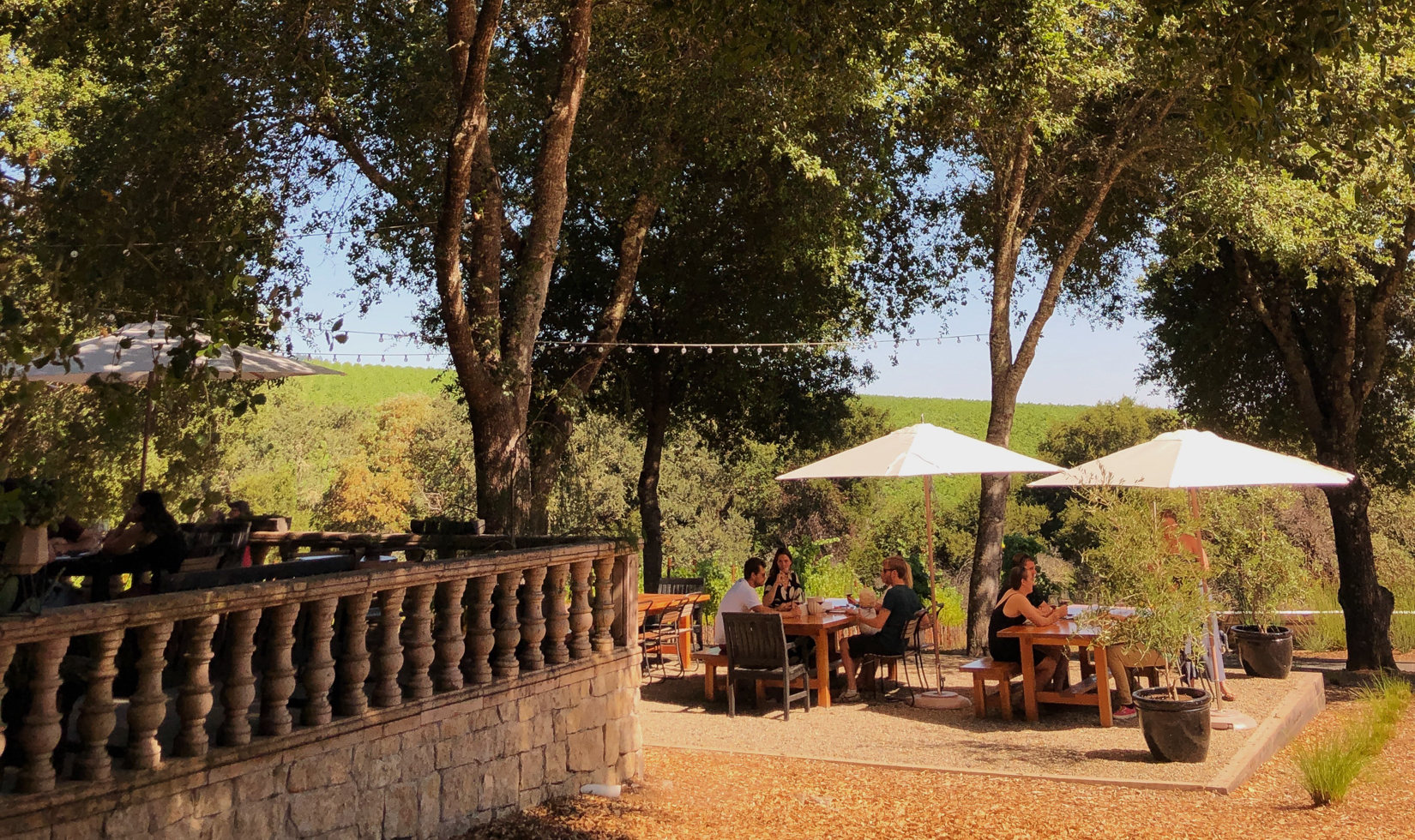
Reeve Wines
Husband and wife team Noah and Kelly Dorrance launched Reeve Wines in 2015, set on a hillside estate in Healdsburg. The brand started out as a side project for Noah when he was the winemaker at Banshee, then grew into a full-time enterprise. Along with Noah, Reeve’s uber-talented winemaking team includes Ross Cobb of Cobb Wines, and Katy Wilson of LaRue. The current release 2019 Rhoda Anderson Valley Pinot Noir weighs in at 13.6%. Visits are available by appointment. (Added 9/7/21)
Rootdown Wines
Winemaker Mike Lucia made wine for Copain and Goldeneye before launching Rootdown in 2016. Lucia’s wines emphasize earth and texture over fruit, and he uses only native yeasts, no new oak, and adds sulfur only in amounts equal to what is found naturally on the vine. Rootdown leans toward lesser-known varieties like trousseau and grenache blanc—all under 13.5%. Walk in for a weekend tasting, or book an appointment Monday-Thursday. (Added 9/7/21)
Ryme Cellars
Ryan and Megan Glaab fell in love while working for Australia’s Torbreck Vintners and created this passion project at Wind Gap, where Ryan served as assistant winemaker. The winery specializes in Italian varietal wines, including aglianico, sangiovese friulano, and vermentino. Alcohols levels range from 11.3% to 13.9%. (Grenache is the lone outlier at 14.2%. Ryme opened a dedicated home for its wines in Forestville in 2017. (Updated 9/7/21)
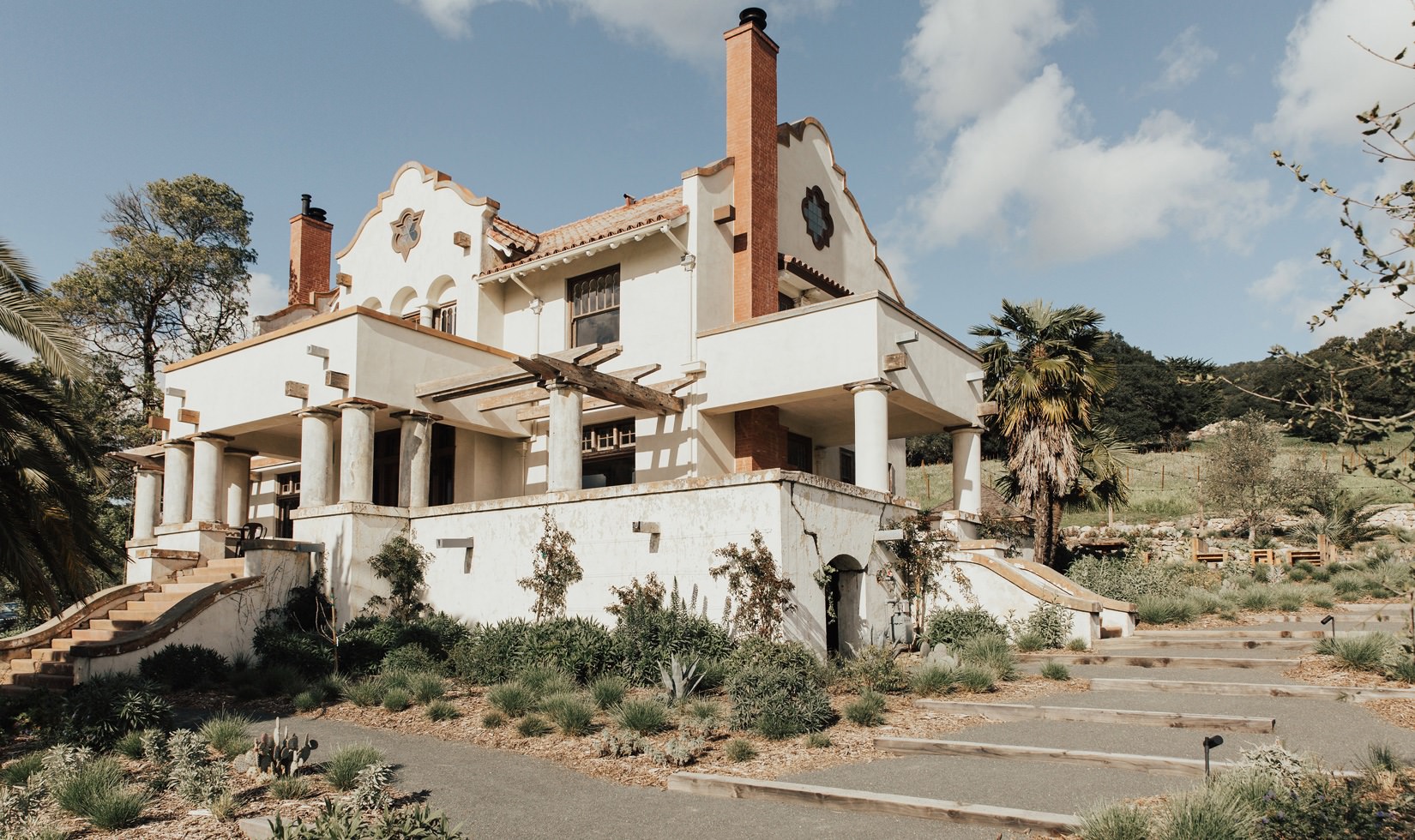
Scribe Winery
Brothers Andrew and Adam Mariani are the scribes at this laid-back winery, where they produce the usual suspects, chardonnay and pinot noir, plus exotics such as silvaner and riesling. In most vintages, nearly all the wines are between 12% and 13% abv; sometimes chardonnay, pinot noir and cabernet sauvignon creep to 14%, depending on vintage conditions. (Updated 7/17/18)
Tara Bella Winery & Vineyards
Cabernet sauvignon in pinot noir country? Indeed. At their small vineyard and winery in the Russian River Valley (off Olivet Road), Kevin and Wendy Morrow produce two cabs, Clone 4 Reserve and Clone 7 Estate, each at approximately 13.4% abv, as well as a Rosé of Cabernet. (Updated 9/7/21)
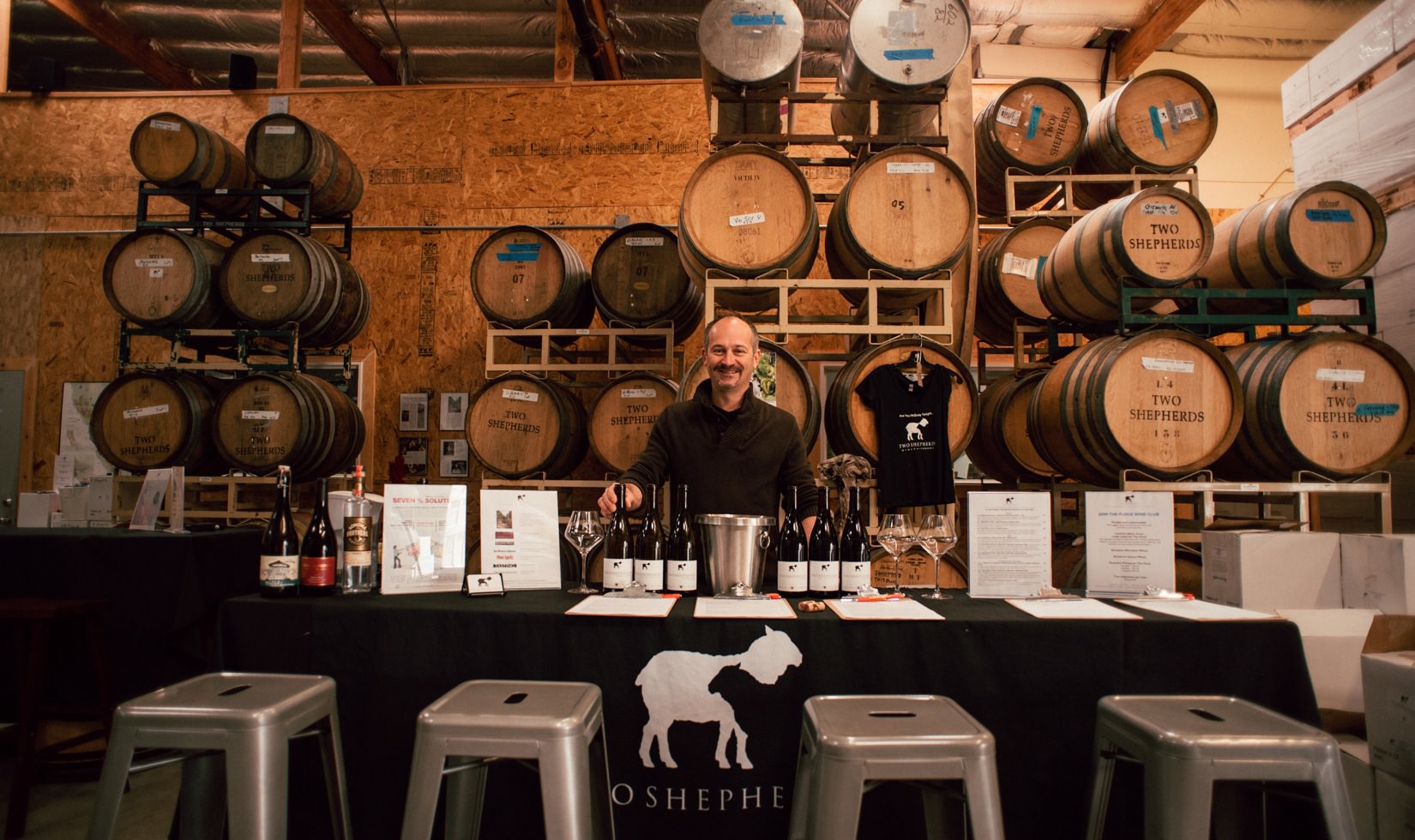
Two Shepherds
William Allen is the chief shepherd of this brand, which focuses on Rhone varieties, including grenache blanc, viognier, grenache, syrah and mourvedre. All wines are under 14% alcohol– some less than 12% — production is small, and the rewards are large for those who appreciate less-is-more wines. Open on Saturdays by appointment; vineyard tastings and farm tours offered by appointment Monday-Saturday. (Updated 9/7/21)
NAPA VALLEY
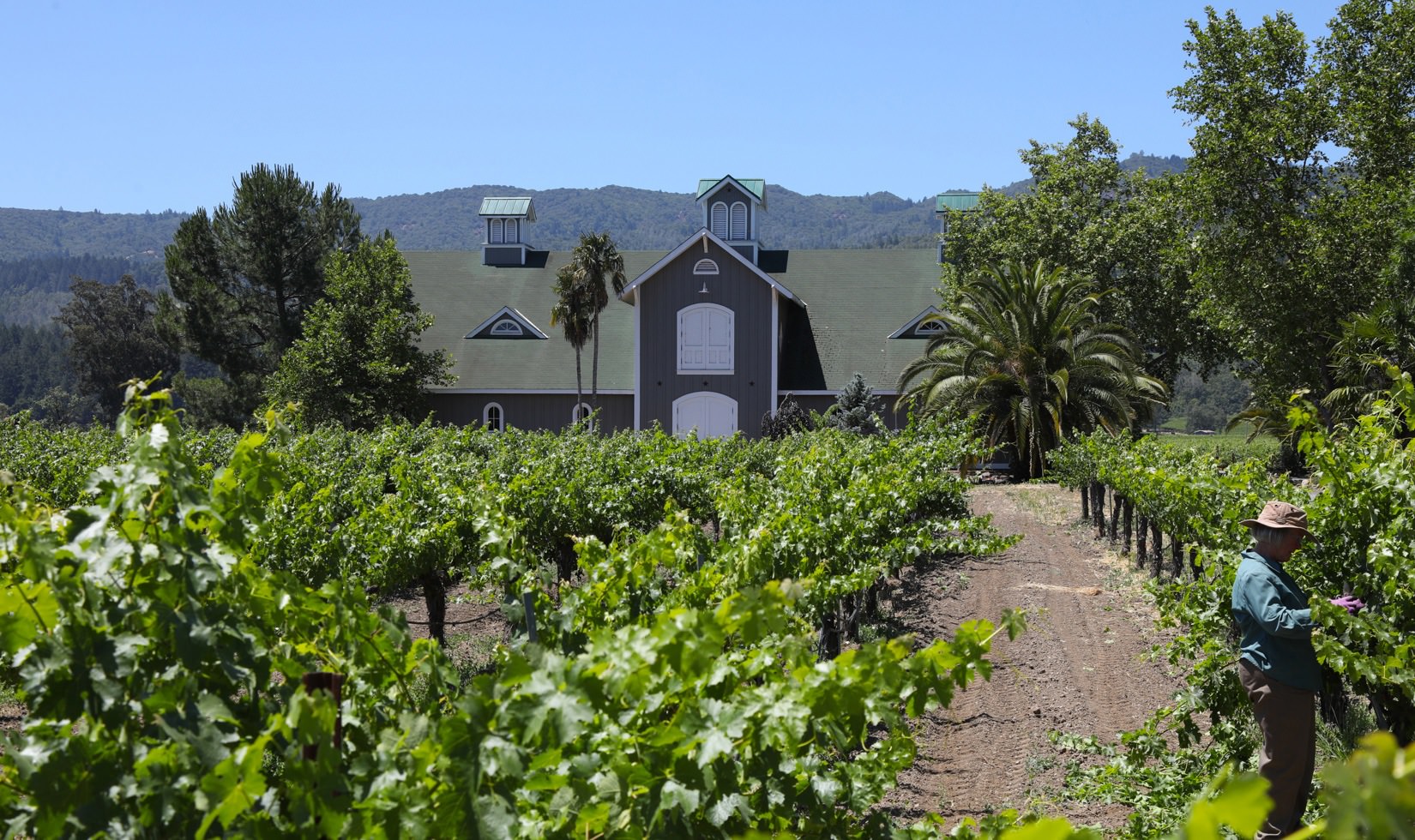
Corison Winery
Cathy Corison’s St. Helena Napa Valley Kronos Vineyard Cabernet Sauvignons have always been approximately 13.8% alcohol or lower, no matter the stylistic pendulum swings in California. “My goal is to make cabernet sauvignon that speaks of place, is both powerful and elegant, graces the table and enjoys a long, interesting life. Low alcohol is key,” she says. The cabs are known for aging beautifully. (Added 6/21/17)
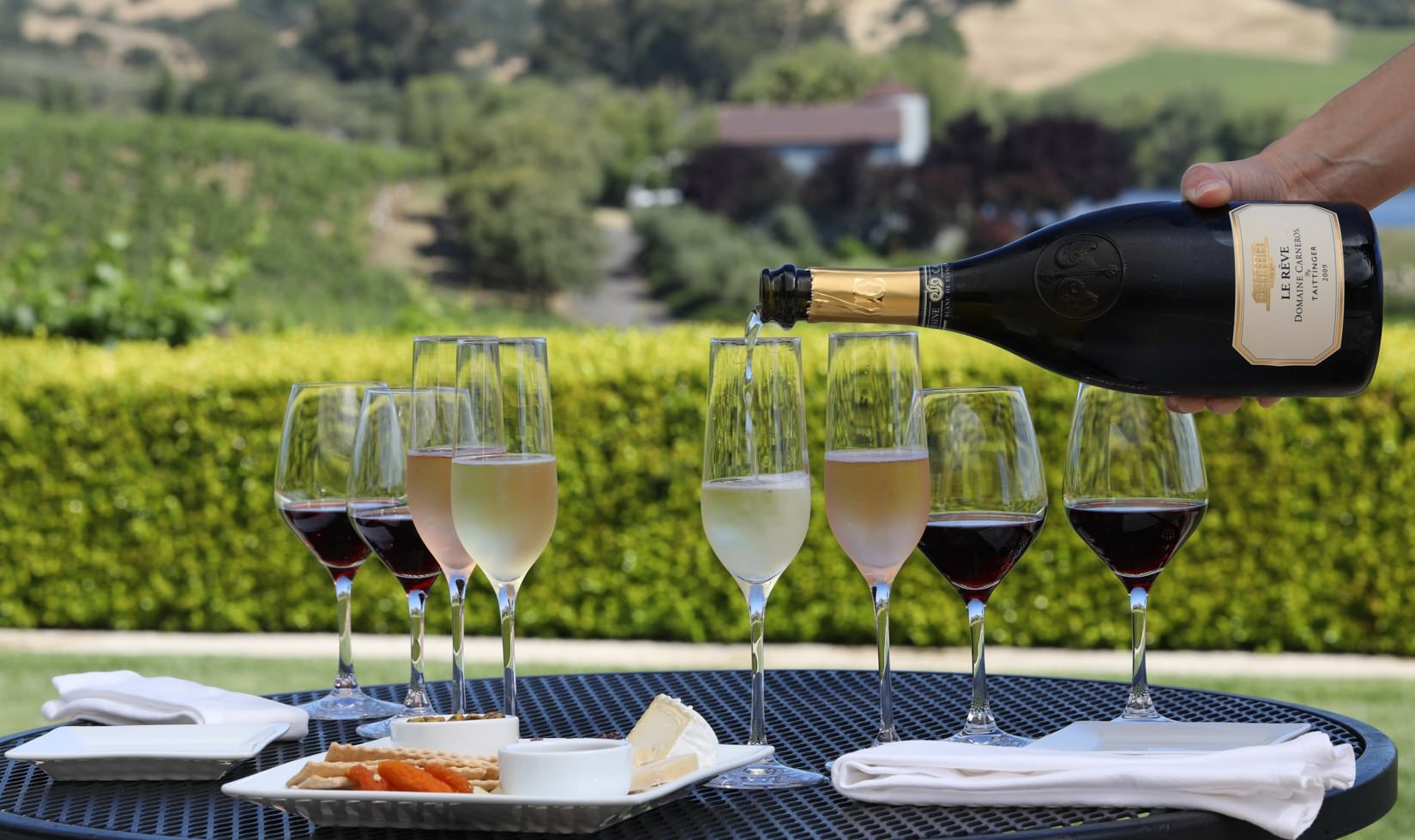
Domaine Carneros
Eileen Crane was the grande dame of this sparkling wine powerhouse, owned by Champagne Taittinger, until 2020, when industry veteran Remi Cohen joined the team as the winery’s new CEO. Their traditionally made bubblies—blanc de blancs, brut and brut rose are the mainstays—are around 12% alcohol. In recent years, the winery has upped production of still wines, though the pinot noirs tend to be a bit above 14%. (Updated 9/7/21)
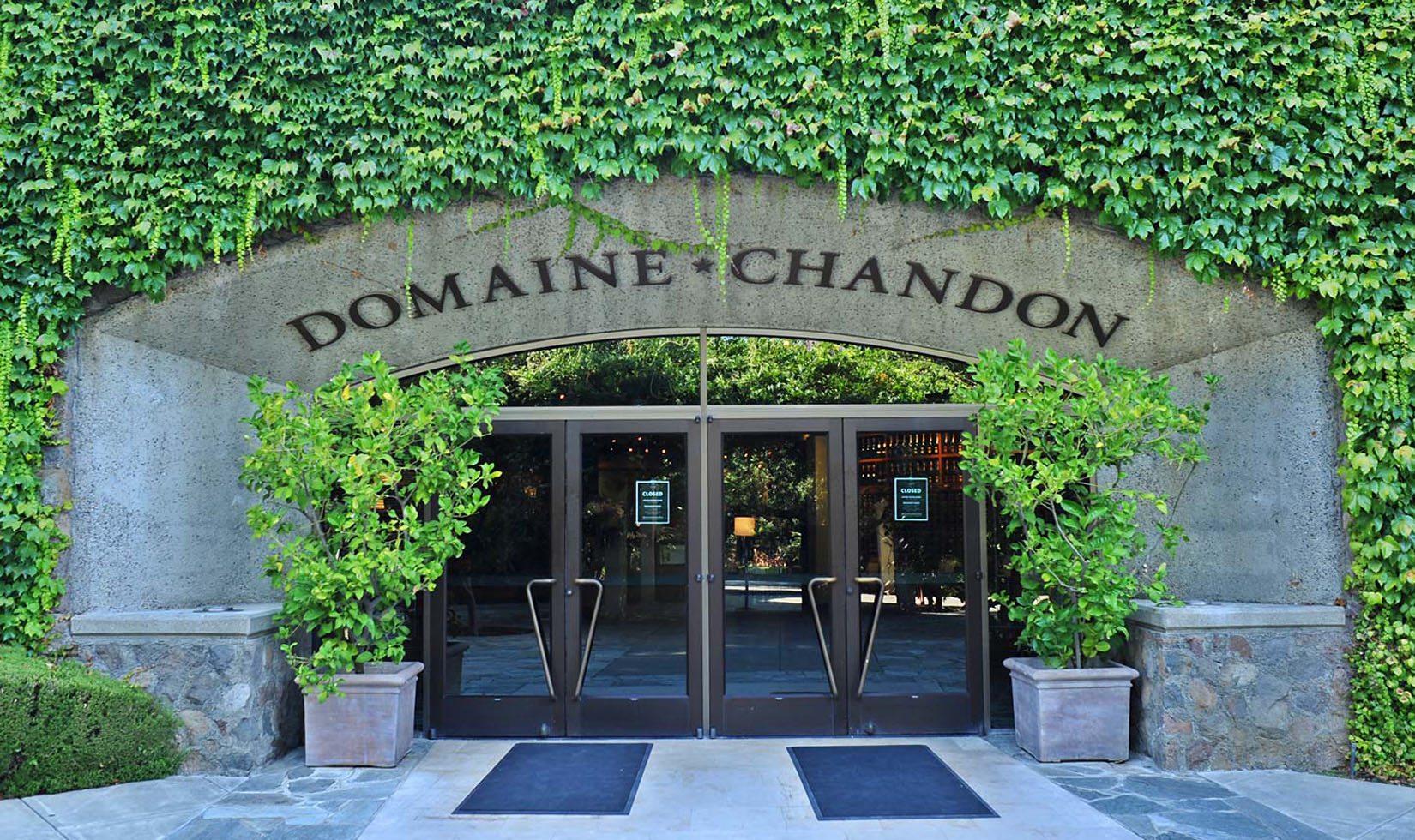
Domaine Chandon
Moet & Chandon was the first Champagne house to stake a claim in California, in 1973. Today its produces huge volumes of traditionally (and competently) made sparkling wine, from the basic Brut Classic to the high-end étoile line. The bubbles are 12.5% abv or so. (Updated 7/17/18)
Dunn Vineyards
Randy and Lori Dunn have been championing lower-alcohol cabernet sauvignon since the 1970s with a focus on mountain-grown fruit. Dunn and his son make just two bottlings–a Howell Mountain and a Napa Valley cabernet–and believe that 14 percent is “the threshold beyond which cabernet tastes hot and unbalanced,” according to an interview in Town & Country. (Updated 9/7/21)
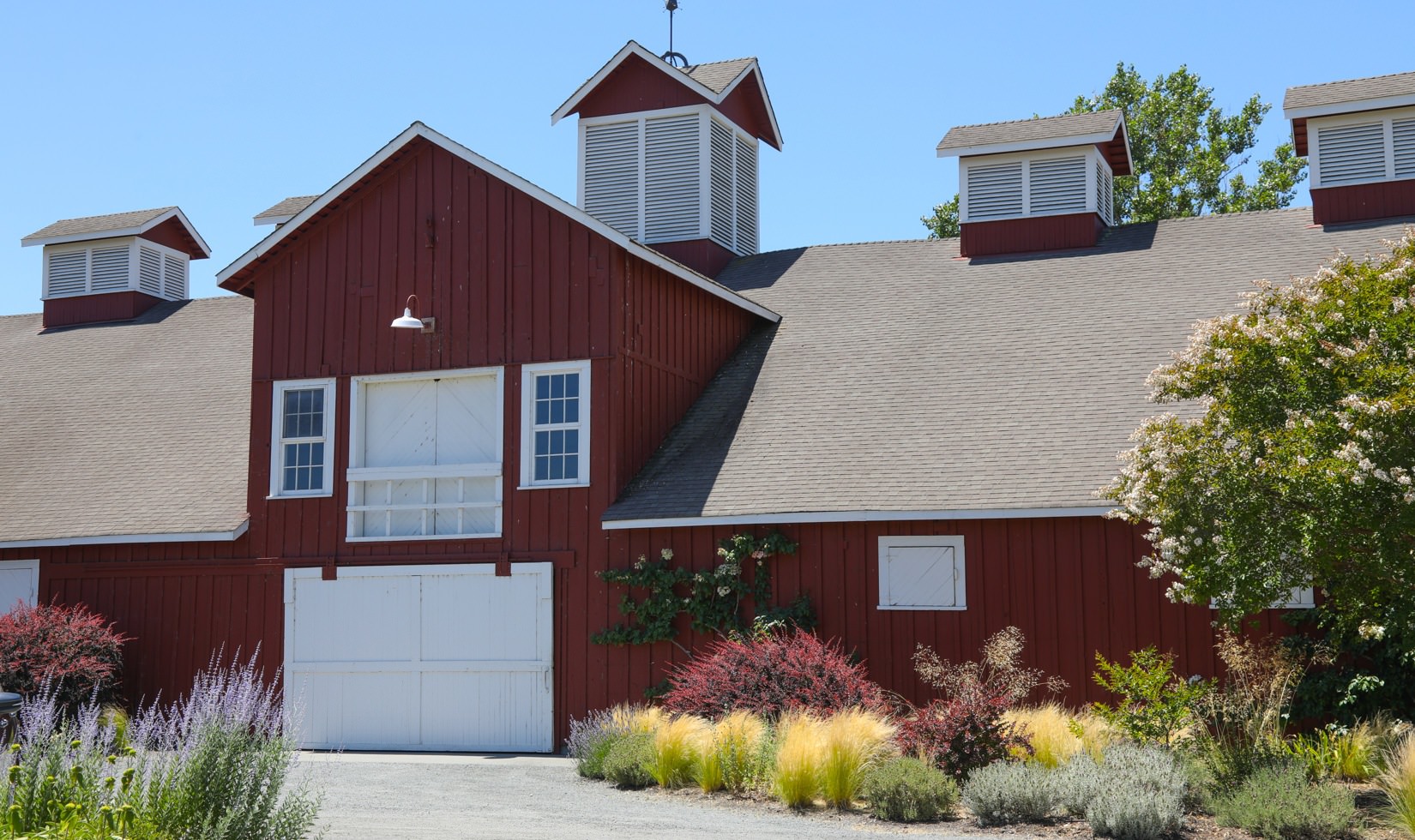
Frog’s Leap
John Williams’ sauvignon blancs, chardonnays, zinfandels, merlots and cabernet sauvignons typically clock in at 14% alcohol or less, yet deliver plenty of flavor to balance the mouthwatering acidity. The sauvignon blancs and Heritage Red, a light-bodied charbono blend, are typically in the 12.5%-13.9% range. Williams and winemaker Paula Moschetti farm the vineyards organically. (Updated 9/7/21)
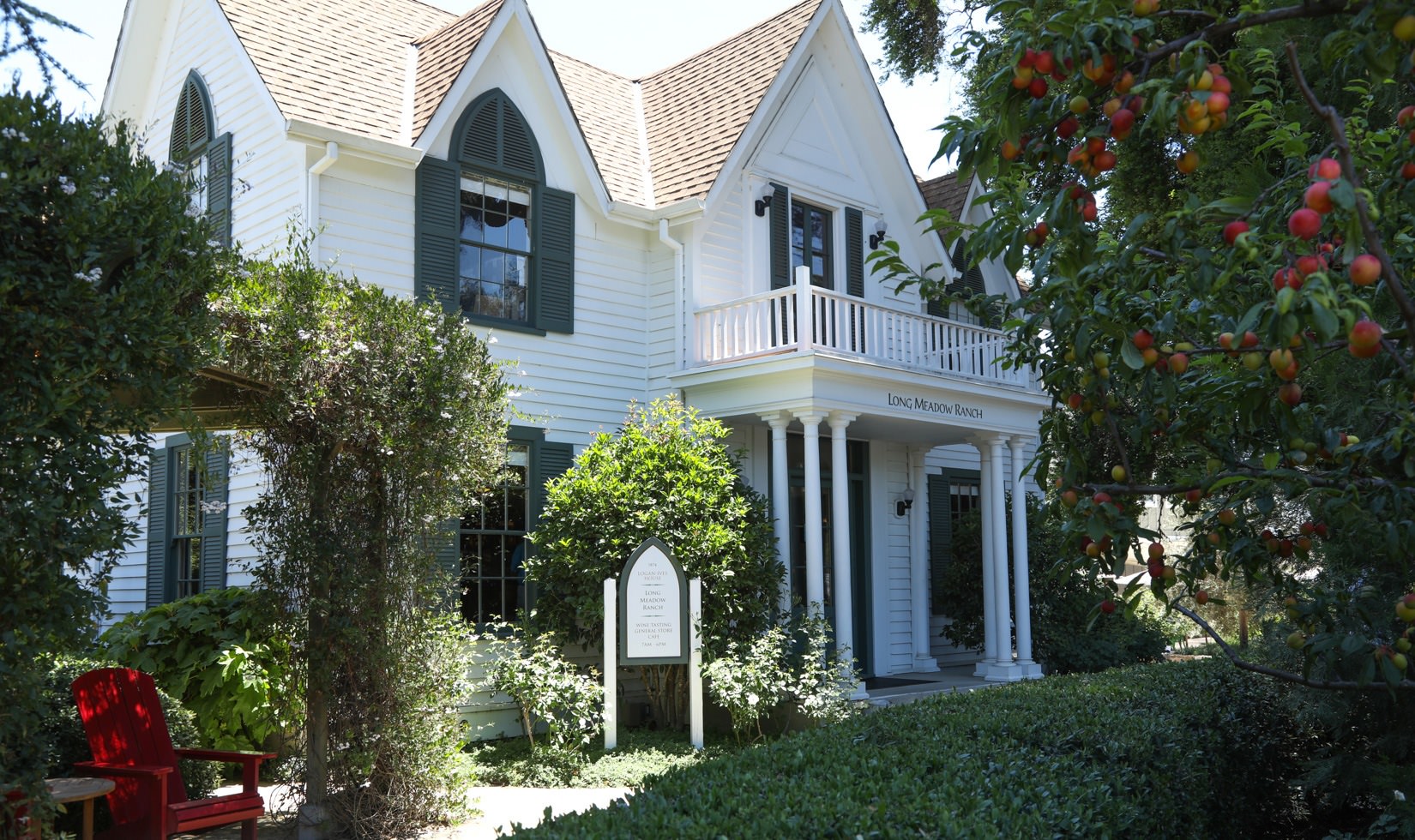
Long Meadow Ranch Winery
Cathy Corison, a former winemaking consultant for this Rutherford producer, set it on the path of restraint and finesse. The Hall family’s two flagship wines, Napa Valley Sauvignon Blanc and Napa Valley Cabernet Sauvignon, can be counted on to give pleasure at 13%-13.8% abv. The family’s relatively recent acquisitions of vineyards in Mendocino County has them producing pinot blanc, pinot gris and pinot noir under 14% abv. (Updated 9/7/21)
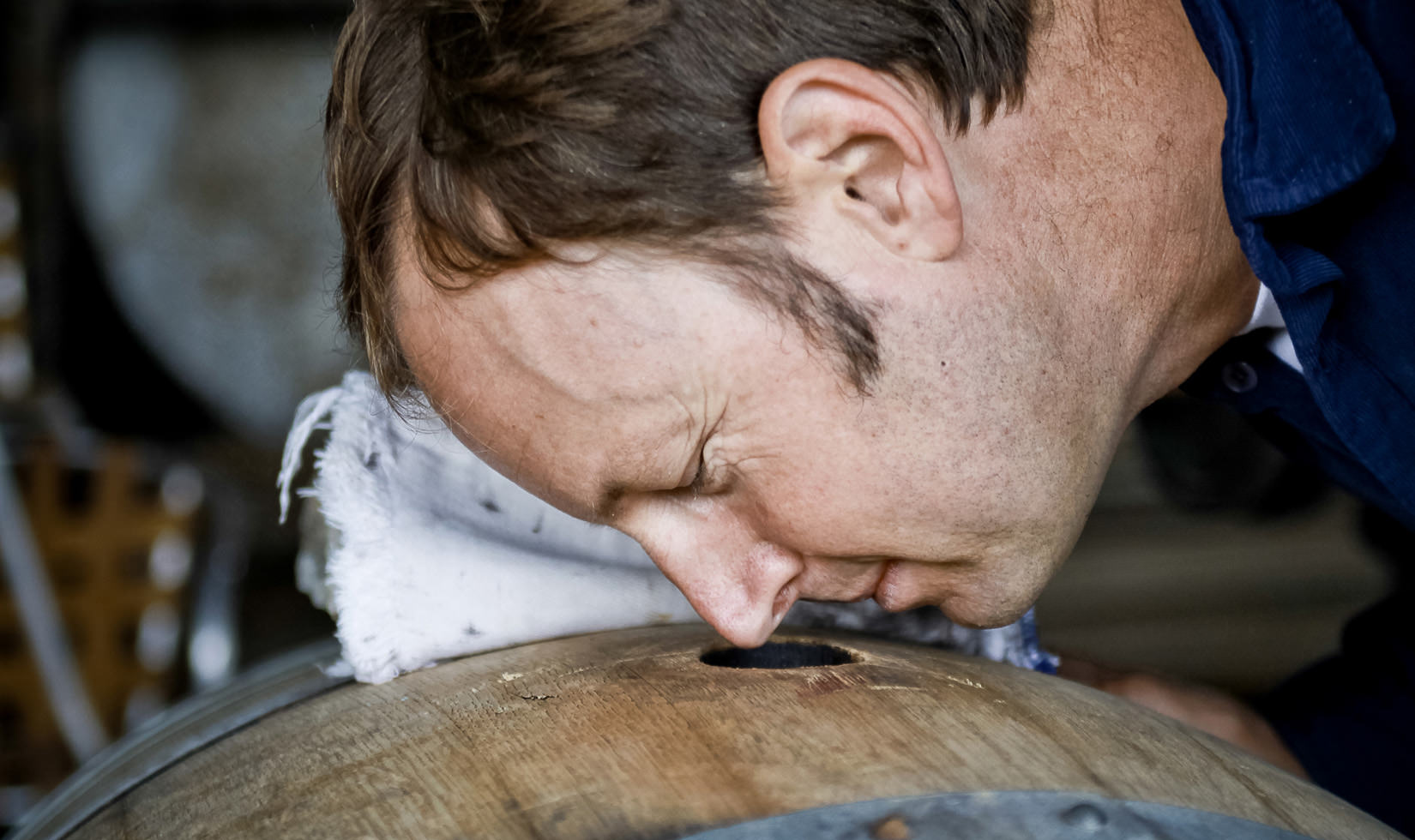
Matthiasson
Moderate alcohol levels are always top of mind for Steve and Jill Matthiasson. They source grapes from the North Coast, including the unusual ribolla gialla, refosco and schiopettino, along with Napa Valley Cabernet Sauvignon and Sonoma Coast Chardonnay. The chardonnay is the most “alcoholic,” at 13.1%; a crisp rosé (currently sold out) is 11.5%, and there are no wimps in the lineup. Contact the winery for appointments. (Updated 9/7/21)
Mumm Napa
One of the Champagne invaders to Napa Valley in the 1970s, Mumm has had ownership changes and quality dips, yet Champagne-born winemaker Ludovic Dervin righted the ship, and Tami Lotz took over as head winemaker in 2019. The bubbles have never been better. From the widely available Brut Prestige to the high-end DVX, the sparklers are all 12.5% abv. The pinot noir still wine is 13.5%. Chardonnay is the outlier at 14.3%. (Updated 9/7/21)
Philip Togni Vineyard
British-born Philip Togni arrived in Napa Valley in 1959, made memorable wines for Chappellet and Cuvaison, and started his own label on Spring Mountain. Two cabernet sauvignons—Tanbark Hill from younger vines and the hallmark estate bottling—are tight and tannic on release, and reward with a decade of cellaring. The Ca’Togni is a sweet red made from the rare table grape black hamburgh. Labeled as “Table Wine,” they don’t disclose alcohol content; whatever it is, Togni’s wines are focused and without fat. Hard to find. Call ahead. (Updated 9/7/21)
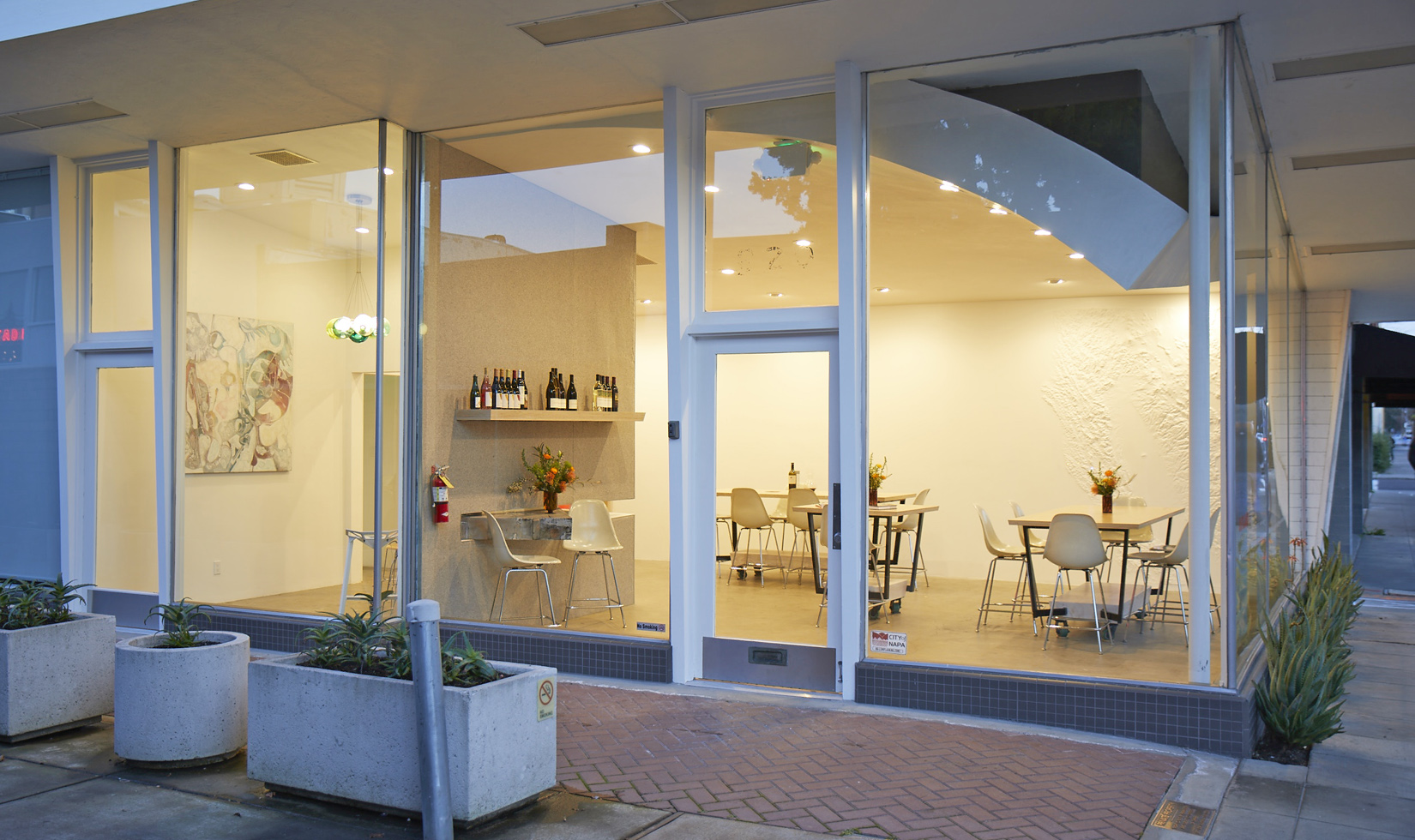
Poe Wines
Inspired by the wines of Champagne and Burgundy, Samantha Sheehan founded POE in 2009. Her base is Napa, yet her vineyard reach includes Sonoma and Mendocino counties. Low-alcohol and low-intervention are her winemaking guideposts. Most unusual: a Pinot Nouveau, fermented and bottled when very young, a la Beaujolais Nouveau. Located in the Outland Wines cooperative tasting room. (Added 6/21/17)
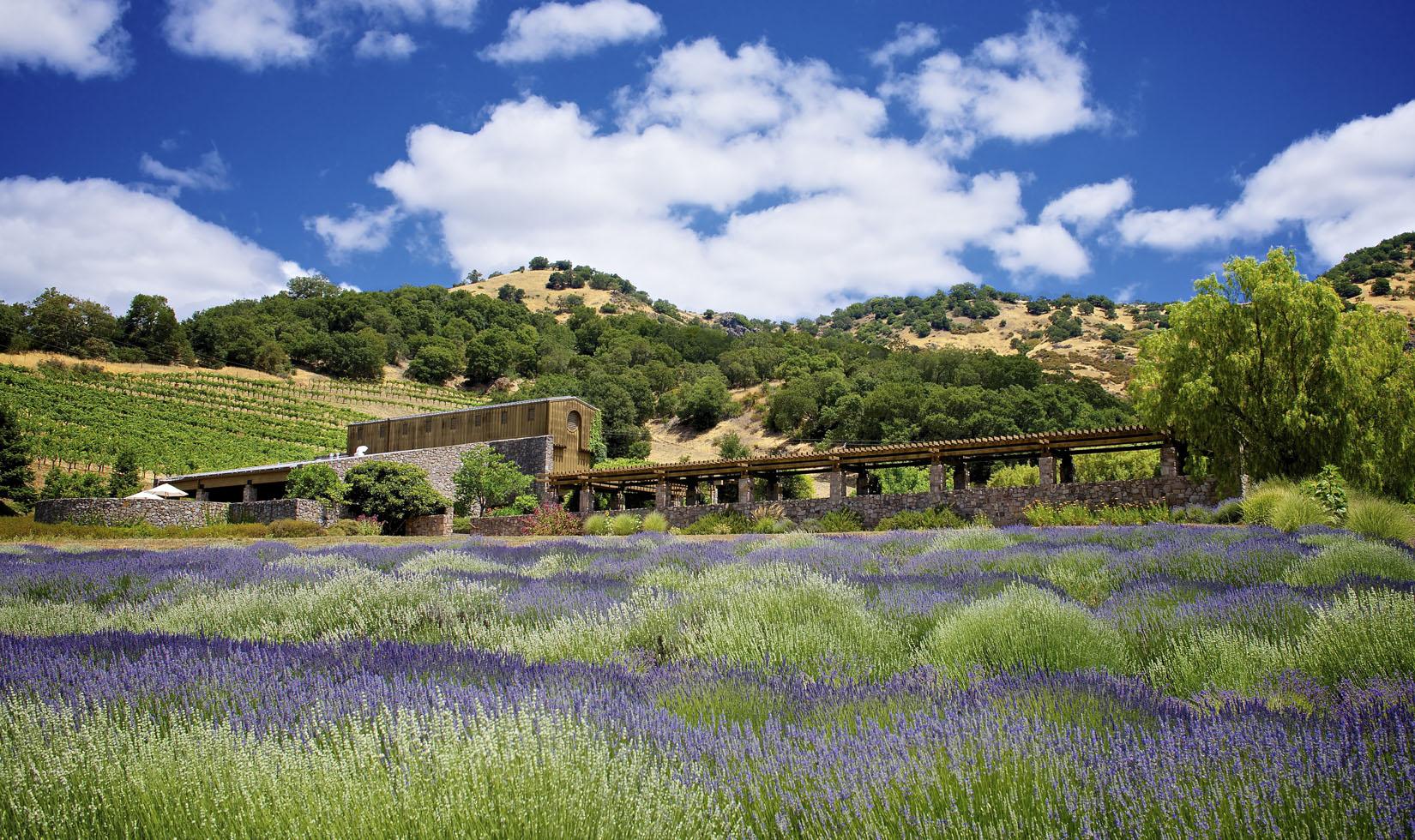
Robert Sinskey Vineyards
Rob and Maria Helm Sinskey, and their longtime winemaker, Jeff Virnig, are famed for turning out wines that make food taste better. Period. Organics and biodynamics are central to their winegrowing philosophy. Balanced, moderate-alcohol Carneros pinot noirs, merlots, cabernet sauvignons and various exotic blends (like Abraxas, made of riesling, pinot blanc, pinot gris, gewurztraminer) are their raison d’etre—and all (except the merlot at 14%) are in the 13% realm. (Updated 9/7/21)
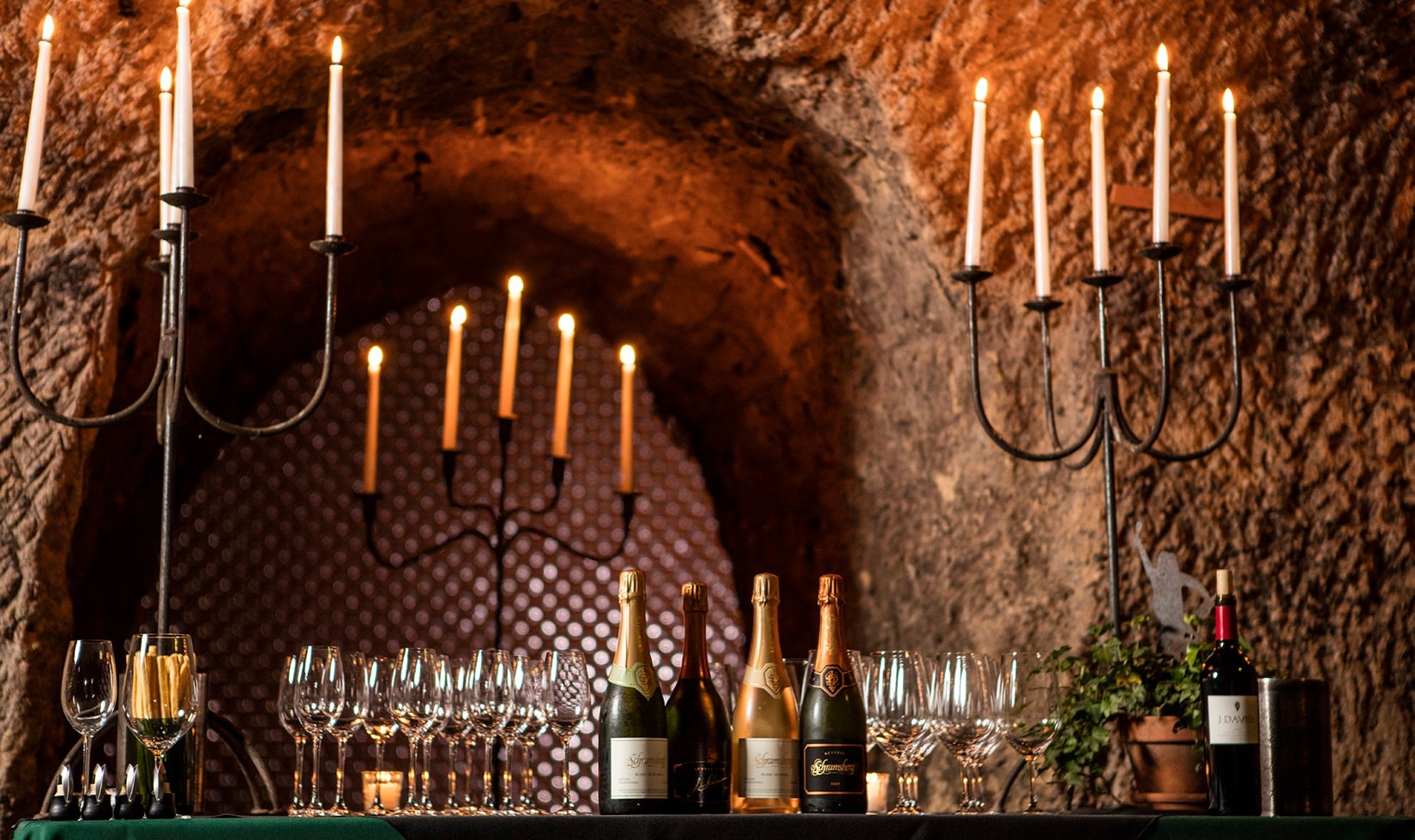
Schramsberg Vineyards
The Davies family has been at the methode traditionelle sparkling wine game since 1965, perfecting grapegrowing and winemaking practices to produce elegant and complex bubblies that are less than 13% abv. Tastings take place in caves dug in the 1800s. The family’s J. Davies cabernets and pinots are heartier wines, in the mid-14% range. (Updated 7/17/18)
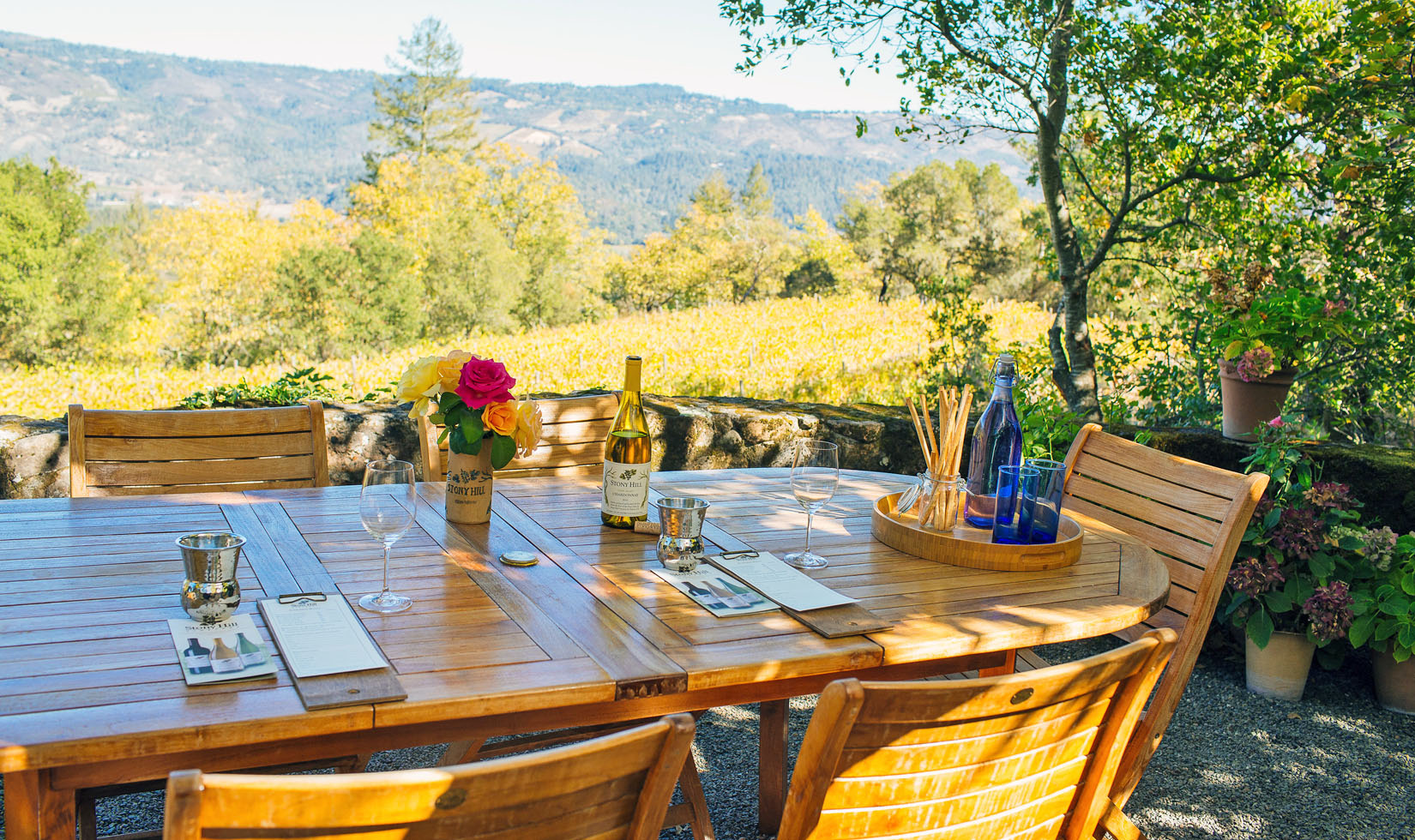
Stony Hill Vineyard
Purchased by the owner of Heitz Cellar in early 2021, this Spring Mountain treasure began in 1952, when Fred and Eleanor McCrea harvested their first chardonnay grapes for an age-worthy, Chablis-style wine. The winery’s estate-only, moderate-alcohol mantra continues, with riesling and cabernet sauvignon joining the lineup. In some vintages, the cab exceeds 14%, but not by much. Open for tastings only by appointment, which take place on the winery’s back terrace, overlooking grapevines and mountains. (Updated 9/7/21)

